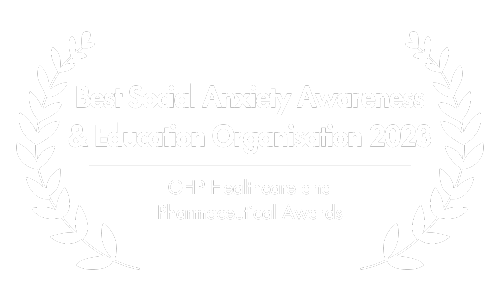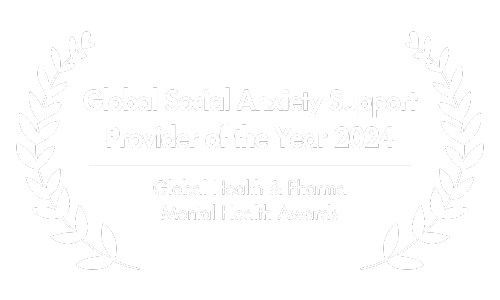Therapy for Social Anxiety Disorder: An All-in-One Roadmap & Guide
This article includes service & product recommendations for people with social anxiety. If you purchase products or services through our links, you may receive a significant discount and we will receive a commission.
Are you tired of feeling uncomfortable in social situations, battling nervous thoughts and an unrelenting sense of unease? You’re not alone in this struggle.
Social anxiety has the power to overshadow life’s best moments, turning relationships, conversations, and everyday interactions into real challenges.

But take heart, because this comprehensive guide is here to illuminate the path toward greater self-confidence.
Imagine yourself navigating social situations with ease, expressing your thoughts freely, and effortlessly forging meaningful relationships.
This isn’t an unattainable dream.
With the right guidance and support, you can break free from the clutches of social anxiety and embark on a journey of self-discovery and growth.

Your path to relief and self-confidence
Welcome to our in-depth exploration of therapy for social anxiety.
Merely two decades ago, the prevalence of social anxiety disorder was estimated at around 12% among individuals at various points in their lives (Kessler et al., 2005).
Fast forward to today, and the landscape has drastically shifted—staggeringly, a whopping 36% of individuals aged 16-29 now meet the diagnostic criteria (Jeffries & Ungar, 2020).
Remarkably, just one in five individuals actively seeks professional assistance for their condition (Grant et al., 2005).
This thought-provoking reality underscores the urgency of addressing social anxiety.
This guide is your invaluable companion on the journey to understand, confront, and triumph over social anxiety.

What Awaits You
Prepare to embark on a journey through a spectrum of therapeutic approaches, from proven methods to innovative alternatives.
Each approach offers unique strengths, equipping you with tools to carve your personal path to wellness.
To empower informed decisions, we’ve assigned efficacy and availability ratings to each therapy. These ratings are grounded in current scientific understanding.
Plus, when relevant, we’ve included book recommendations to further enrich your journey.

How to Use This Guide
This article is more than a compilation of therapies and ratings. It’s your mentor, guide, and ally – empowering you to make choices aligned with your aspirations, preferences, and circumstances.
Feel free to bypass therapies that don’t resonate, but keep in mind that exploring different options offers valuable insights. These insights can lead you to interventions that effectively diminish social anxiety, pinpointing areas crucial for your growth.
Make sure to read through to the end, as we delve into crucial topics beyond therapy types. These include financial considerations, the comparison between in-person and online therapy, practical tips for your therapeutic journey, and a wealth of other valuable insights.
Your journey begins here, and with this guide as your compass, you’ll possess the wisdom to make vital decisions for your psychological well-being.

Given the wealth of information this guide contains, you might find it useful to bookmark it for future reference.
Furthermore, the clickable table of contents below allows you to swiftly navigate to sections of particular interest with a single click.
Are you ready to step into a world where confidence outshines anxiety? Then let’s begin.
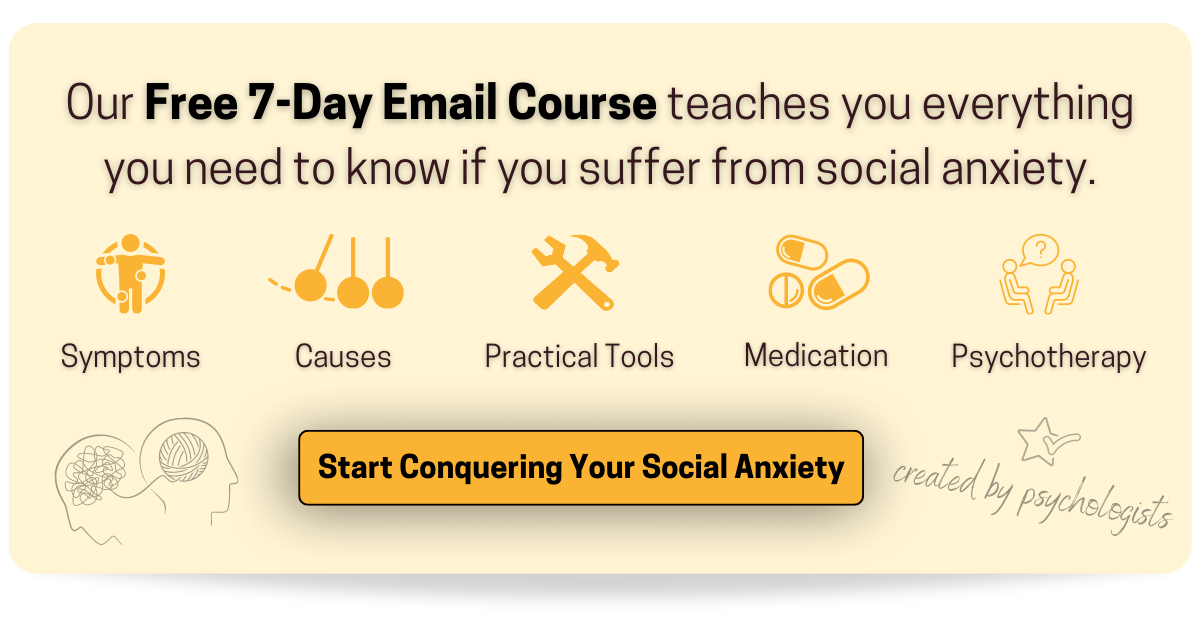
A. Established Therapeutic Approaches
Welcome to the core of our guide – an exploration of well-established therapeutic approaches that effectively tackle social anxiety.
These methods, backed by robust research, offer a solid foundation for those seeking to overcome its grip.
Here, we break down each approach, explaining its workings and how it addresses social anxiety’s complexities.
By absorbing these insights, you’ll be better equipped to select the right therapeutic path.
Keep in mind that the efficacy and availability ratings aren’t intended to favor one therapy over another; rather, they provide insights to facilitate informed decisions grounded in scientific findings.

Exposure Therapy
Efficacy Rating: Established Effectiveness
Availability Rating: Widespread Availability
Exposure therapy stands as a powerful and effective approach in treating social anxiety.
It’s important to note that while exposure therapy may seem intimidating, it has proven to be one of the fastest and most reliable ways to reduce social anxiety and regain control over one’s life.
Understanding Exposure Therapy: Confronting Fear to Diminish Anxiety
Exposure therapy is rooted in the concept of facing one’s fears in a controlled and gradual manner.
The underlying principle is simple yet profound: by repeatedly exposing oneself to the situations that trigger anxiety, the fear response becomes less intense over time.
This process of desensitization is underpinned by the concept of habituation, a psychological phenomenon where the emotional response to a stimulus decreases with repeated exposure.

How Exposure Therapy is Carried Out for Social Anxiety
In the context of social anxiety, exposure therapy involves gradually exposing the individual to social situations that provoke anxiety. This exposure can occur in several ways:
Imaginal Exposure: This involves vividly imagining anxiety-provoking social scenarios. While it might not induce the same level of fear as real-life exposure, it helps individuals confront their fears and start building resilience.
In Vivo Exposure: In this approach, individuals engage in real-life social situations that they have been avoiding due to their anxiety. The exposure is carefully planned, starting with less anxiety-inducing situations and progressing towards more challenging ones.
Virtual Reality Exposure: Emerging technologies have introduced virtual reality (VR) exposure therapy. This method allows individuals to experience simulated social situations in a controlled environment, providing a safe space to practice coping strategies and gradually reduce their anxiety.

The Intimidation Factor: Acknowledging Fear and Embracing Courage
Exposure therapy for social anxiety can indeed be intimidating. The prospect of facing situations that have caused distress for a long time can evoke apprehension.
It’s essential for individuals to recognize that feeling scared or anxious about exposure is a normal reaction.
The therapy itself is designed to work within (or only slightly outside of) the individual’s comfort zone, starting with less daunting situations and gradually progressing.
Therapists are skilled at tailoring the exposure process to the individual’s pace, ensuring a supportive and safe environment for growth.

Scientific Validation of Exposure Therapy for Social Anxiety
The effectiveness of exposure therapy for social anxiety is firmly grounded in substantial research.
Decades of data highlight its prowess as a standalone solution for pathological fears (Foa & Kozak, 1986). Here are some key findings:
- A pivotal study by Kaczkurkin and Foa, 2015 underscores exposure therapy’s potential. Whether integrated with cognitive therapy or employed alone, it notably reduces social anxiety symptoms, attesting to its methodical approach of gradual confrontation.
- Beyond tradition, virtual reality exposure therapy emerges as a compelling contender, matching conventional methods’ outcomes (Klinger et al., 2005; Chesham et al., 2018). This showcases technology’s role in expanding exposure’s horizons.
- Longevity is another forte. Research shows both virtual reality exposure therapy and exposure group therapy produce lasting improvements (Anderson et al., 2017), substantiated by improved well-being, task performance, and sustained symptom reduction.
- Exposure therapy extends its reach to adolescents too. A school-based initiative merging social skills training and exposure techniques significantly reduces social anxiety among adolescents (Masia Warner et al., 2007), proving its adaptability and effectiveness across age groups.

Book Recommendation: The Shyness and Social Anxiety Workbook
For those seeking to employ exposure therapy as a powerful tool to alleviate social anxiety, “The Shyness and Social Anxiety Workbook” comes highly recommended (available for purchase here).
This book offers proven-effective techniques, practical activities, and updated research, providing a structured pathway to gradually confront fears and actively engage with the social world.
It aligns well with the principles of exposure therapy, empowering individuals to take meaningful steps towards conquering social anxiety and enjoying a more fulfilling life.
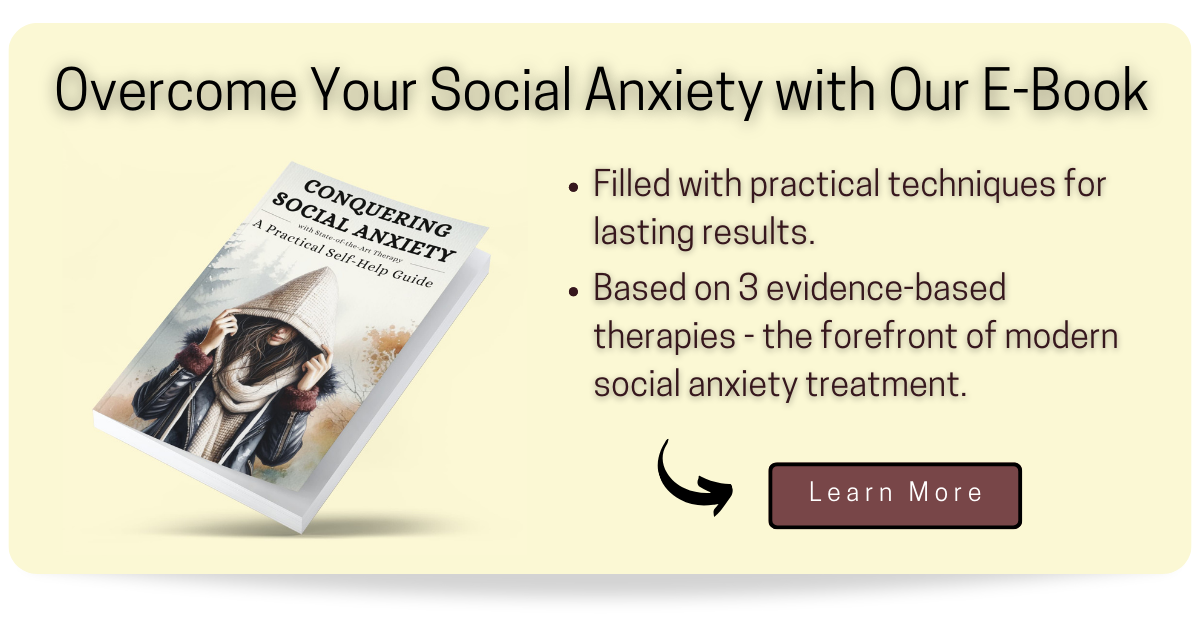
Exploring Further
To dive deeper into exposure therapy for social anxiety, we recommend you read our in-depth introductory guide by clicking here.
To learn more about so-called social mishap exposure exercises, which directly address feelings of shame and embarrassment, we invite you to check out our article entitled “Shame Attacking Exercises for Social Anxiety“. You can access it by clicking here.

The Fusion of Exposure & Cognition
While the pure form of exposure therapy, often administered by behavioral therapists, remains accessible, a highly effective evolution has taken place.
In modern practice, exposure therapy harmoniously merges with cognitive techniques, forming the foundation of cognitive behavioral therapy (CBT), a transformative approach we will delve into next.
Cognitive-Behavioral Therapy
Efficacy Rating: Established Effectiveness
Availability Rating: Widespread Availability
Cognitive behavioral therapy (CBT), deeply rooted in cognitive restructuring and behavioral modification, equips individuals with effective tools to challenge their anxiety-driven thoughts and behaviors, ultimately leading to lasting relief and increased life satisfaction.
Empowering Change through Thoughts and Actions
CBT addresses social anxiety by targeting both cognitive distortions and maladaptive behaviors.
The central premise revolves around the notion that our thoughts, feelings, and actions are interconnected.
By reshaping thought patterns and subsequently altering behaviors, individuals can interrupt the anxiety cycle and pave the way for meaningful change.

How Cognitive Behavioral Therapy Works For Social Anxiety
CBT unfolds in a structured manner, guided by a skilled therapist. Here’s a glimpse into the process:
Assessment: The therapist collaborates with the individual to comprehensively understand their anxiety triggers, thought patterns, and behaviors.
Cognitive Restructuring: This core component involves identifying and challenging negative thought patterns. Individuals learn to replace distorted, anxiety-inducing thoughts with more rational and balanced alternatives.
Behavioral Experiments: Individuals engage in real-life experiments that test the validity of their anxiety-related beliefs. These experiments help to empirically challenge the accuracy of fears and gradually build evidence against anxious thoughts.
Exposure and Response Prevention: Exposure to anxiety-provoking situations, similar to exposure therapy, is integrated into CBT. However, in CBT, the focus is also on preventing the avoidance behaviors that typically follow anxiety. This confronts both the cognitive and behavioral aspects of anxiety.
Skill Building: Individuals acquire practical coping skills, such as relaxation techniques, effective communication strategies, and assertiveness training, which bolster their ability to navigate social situations with confidence.

Scientific Validation of CBT for Social Anxiety
The scientific validation of CBT for social anxiety is robust and compelling. Network meta-analyses and meta-analytic reviews consistently confirm its efficacy:
- A systematic review comparing interventions for social anxiety disorder identified individual CBT as one of the most effective psychological treatments (Mayo-Wilson et al., 2014).
- Meta-analytic reviews of adult CBT outcomes for anxiety disorders, including social anxiety disorder, consistently highlight its effectiveness (Norton & Price, 2007).
- Virtual reality-based CBT demonstrates significant reductions in social anxiety symptoms and improvements in social functioning (Geraets et al., 2019).
- Resource-oriented cognitive-behavioral therapy and cognitive therapy maintain improvements over follow-ups, even up to a 10-year mark (Willutzki et al, 2012).
- Across multiple meta-analyses, CBT consistently shows efficacy for various psychiatric disorders, including social phobia, with significant symptom reduction and mental health enhancement (Butler et al., 2006).

Book Recommendation: The Social Anxiety (CBT) Workbook for Adults
Designed for individuals eager to harness the potential of CBT in managing social anxiety, “The Social Anxiety (CBT) Workbook for Adults” is a highly recommended resource (available for purchase here).
This comprehensive guide offers actionable insights, from unraveling the roots of social anxiety to challenging negative thought patterns and behaviors.
With mindfulness meditation techniques and CBT exercises, this workbook equips readers with practical tools to cultivate an anxiety-free life.

Exploring Further
For a comprehensive dive into CBT for social anxiety, we suggest exploring our introductory guide. You can access it by clicking here.
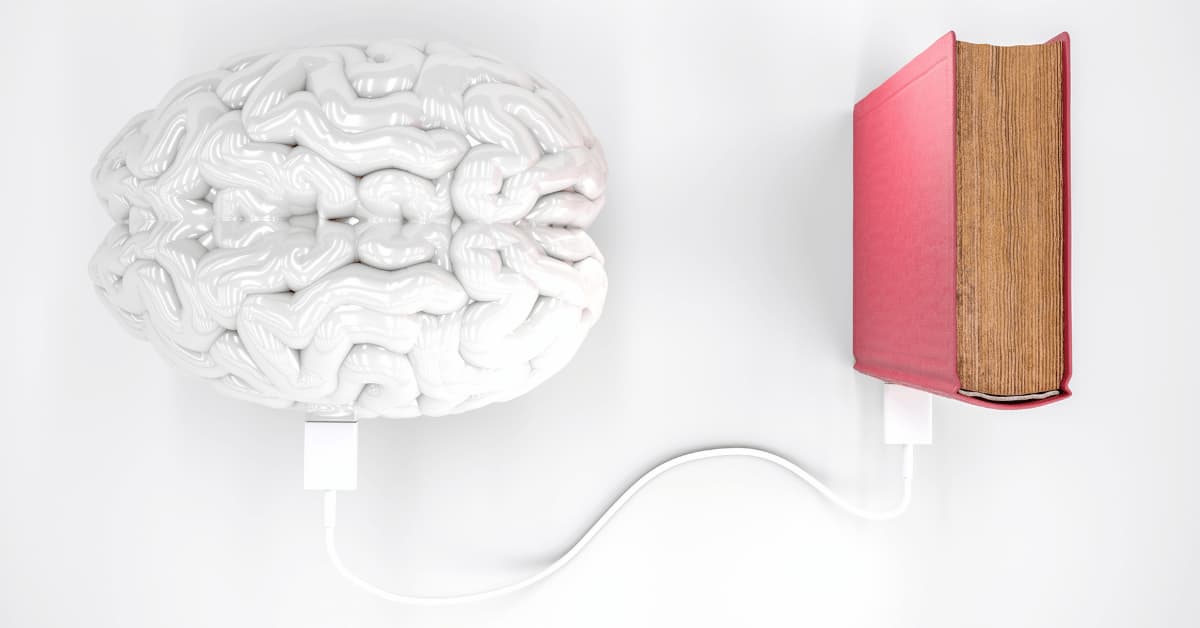
CBT’s Integration with Exposure Therapy: A Synergistic Approach
As you have seen, CBT incorporates exposure-based techniques, synergistically amplifying the therapy’s effectiveness.
This fusion combines cognitive restructuring with gradual exposure, creating a dynamic approach that challenges distorted thoughts while simultaneously encouraging active engagement in anxiety-provoking situations.
Next, our focus now shifts to another vital contributor in the landscape of social anxiety treatment: psychodynamic therapy.

Psychodynamic Therapy
Efficacy Rating: Established Effectiveness
Availability Rating: Widespread Availability
Amid the therapeutic landscape, psychodynamic therapy (PDT) emerges as a potent contender for addressing social anxiety, dispelling the notion that it lacks efficacy – an idea rooted in outdated perceptions.
Pioneering research now substantiates its prowess, unveiling compelling evidence that psychodynamic therapy effectively treats social anxiety in both its short- and long-term iterations.
Unveiling the Depths of the Subconscious
During PDT sessions, individuals are encouraged to open up about their thoughts, feelings, and experiences.
Through in-depth discussions, the therapist aims to foster self-awareness, helping individuals connect the dots between past experiences and present struggles.
This process can shed light on unconscious patterns that contribute to social anxiety, ultimately leading to a deeper understanding of oneself.

From Insight to Transformation
PDT goes beyond exploring the past – it is a channel to use insights and initiate positive change.
By bringing awareness to the root causes of social anxiety, individuals can actively reshape their thought patterns, behaviors, and emotional reactions.
Moreover, PDT offers the opportunity for catharsis, which refers to the process of making inner conflicts conscious, which often leads to a notable reduction in symptoms.
Short-Term vs. Long-Term PDT
While PDT often entails an extended engagement for thorough exploration, it’s worth noting that short-term interventions, akin to standard CBT, are also available, typically spanning 12-16 sessions/weeks.
Yet, PDT’s inherent strength lies in its capacity for in-depth analysis.
The prolonged duration facilitates a comprehensive investigation into the underlying factors contributing to social anxiety.

While much research has centered on briefer interventions, the potential of extended PDT to yield profound, enduring improvements – in both social anxiety and broader life facets – remains a compelling avenue to consider.
Longer interventions can offer a conducive environment for deeper introspection and change, potentially leading to even more robust results.
Scientific Validation of PDT for Social Anxiety
PDT has long been revered for its insights, yet its empirical validation has sparked ongoing debate.
However, contemporary research now substantiates its efficacy in social anxiety treatment, capitalizing on the self-awareness and profound understanding it fosters. Notable findings include:
- In a study comparing CBT and PDT for adolescents with social anxiety disorder, both interventions exhibited superiority over a waiting list, with CBT showing slightly stronger effects (Salzer et al., 2018).
- A 10-week internet-based psychodynamic therapy protocol demonstrated efficacy in reducing social anxiety symptoms, with sustained improvements lasting up to 2 years (Johansson et al., 2017).
- For individuals with social anxiety disorder, both CBT and PDT displayed effectiveness, with CBT showing marginally higher remission and response rates in the short term (Leichsenring et al., 2013).
- PDT’s efficacy for social anxiety disorder is comparable to CBT, with PDT matching CBT’s efficacy and maintaining its effectiveness over the long term (Leichsenring et al., 2014).

Exploring Further
To learn more about psychodynamic therapy for social anxiety, we invite you to read our in-depth article on the topic. You can access it by clicking here.
Embracing PDT: A Valid Pathway to Change
For those drawn to introspection and seeking a deeper understanding of the roots of their social anxiety, psychodynamic therapy offers a valid avenue.
Up next, our focus now turns to social skills training, a valuable tool aimed at empowering individuals with the practical abilities needed to navigate social interactions with confidence and ease.

Social Skills Training
Efficacy Rating: Established Effectiveness
Availability Rating: Moderate Availability
Navigating social interactions can be daunting for individuals grappling with social anxiety.
Social skills training (SST) offers a structured approach to cultivate the skills and confidence necessary for engaging effectively in various social contexts.
Understanding Social Skills Training
SST is designed to enhance interpersonal abilities, addressing challenges arising from social anxiety.
Contrary to the common assumption that everyone with social anxiety lacks social skills, SST acknowledges that while some individuals may indeed benefit from skill enhancement, others may primarily benefit from other interventions.
This means that SST is most impactful for individuals who genuinely lack social skills or have what is referred to as a ‘social skills deficit’.

The Path to Proficiency: How SST Works
SST comprises targeted exercises and role-playing scenarios aimed at honing specific social skills.
These skills range from initiating conversations and maintaining eye contact to assertive communication and active listening.
Guided by a therapist, individuals are encouraged to practice these skills in simulated and real-life social settings, fostering incremental progress.

Components of SST
Assessment: Therapists initiate the process by evaluating an individual’s specific social obstacles and strengths. This assessment acts as a guiding compass for constructing a tailored treatment strategy.
Skill Identification: Collaboratively, therapists and clients identify particular social skills that could benefit from enhancement. These skills might revolve around initiating and sustaining conversations, managing disagreements, and articulating oneself clearly.
Skill Acquisition: Individuals are taught pragmatic strategies and techniques to amplify their social skills. Role-playing, behavioral rehearsal, and modeling often play roles in facilitating practice within a supportive, secure environment.
Practice and Feedback: Repetition and practice within authentic situations prove integral to cementing newly acquired social skills. Therapists contribute feedback and guidance to assist clients in refining their capabilities and developing confidence over time.
Generalization: As skills flourish, individuals are encouraged to apply them in diverse social contexts, gradually expanding their comfort zone and engaging in an ever-broader spectrum of social interactions.

Individual vs. Group Format: Tailored to Suit
SST can be administered in both individual and group formats, offering flexibility to cater to personal preferences and needs.
Group sessions create a supportive environment for practicing skills with peers, while individual sessions allow for personalized attention and tailored skill development.
Scientific Validation of SST for Social Anxiety
Research illuminates the effectiveness of SST as a vital component in tackling social anxiety. A selection of noteworthy findings includes:
- Research suggests that social skills deficits may contribute to the development of social anxiety, underscoring the potential role of social skills training in addressing social anxiety specifically (Segrin, 1996).
- Incorporating SST into CBT interventions can amplify treatment efficacy for children and adolescents with social anxiety disorder, enhancing intervention outcomes (Scaini et al., 2016).
- Adding social skills training to the treatment of adolescents with social anxiety disorder is shown to enhance intervention results, reducing avoidance behaviors and improving overall efficacy (Olivares-Olivares et al., 2018).
- The efficacy of a school-based intervention focusing on social skills and exposure is demonstrated in reducing social anxiety among adolescents, with enduring benefits extending for at least 6 months post-treatment (Masia Warner et al., 2007).
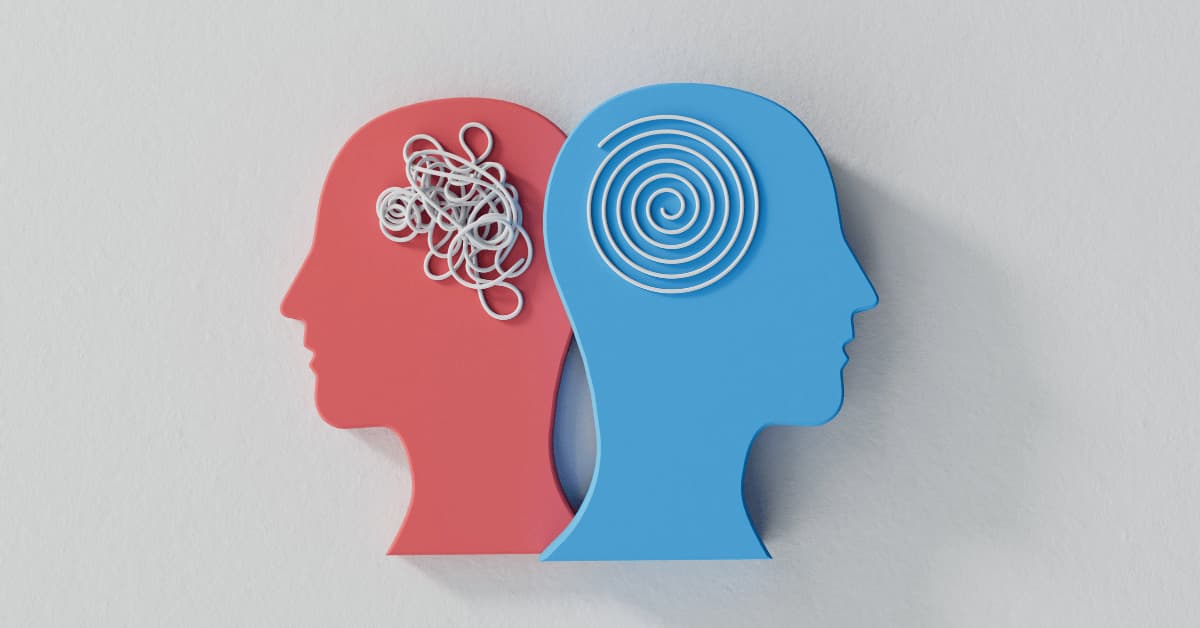
Book Recommendation: Improve Your Social Skills
“Improve Your Social Skills” is a comprehensive guide authored by a professional social skills coach (available for purchase here).
With step-by-step explanations, it covers a wide range of topics including conversation flow, body language, making friends, combating shyness, and successful dating.
This guide equips readers with practical tools to navigate social interactions and build meaningful connections.
Incorporating SST into Therapy
SST can serve as a valuable adjunct to multiple therapeutic approaches. For individuals grappling with social skills challenges, integrating SST can bolster their progress.
However, it’s important to note that SST, on its own, typically doesn’t address the underlying causes of social anxiety unless the primary issue is a lack of social skills.
To dive deeper into social skills training for social anxiety, we recommend you click here to read our in-depth guide.
Our focus now shifts to interpersonal therapy, a relational approach aimed at unraveling the intricate connections between our thoughts, emotions, and interpersonal dynamics.

Interpersonal Therapy
Efficacy Rating: Established Effectiveness
Availability Rating: Moderate Availability
As we delve deeper into therapeutic options for social anxiety, we come across interpersonal therapy (IPT).
This approach focuses on understanding the complex web of interpersonal relationships and emotions, and how these relate to and potentially cause your social distress.
Understanding IPT
IPT centers on the connections between individuals and their environment.
It acknowledges that our relationships, roles, and interactions can significantly impact our emotional well-being.
By addressing these connections, IPT aims to alleviate emotional distress and cultivate healthier ways of engaging with others.

Navigating the Challenges of Social Anxiety
IPT is particularly well-suited for individuals grappling with social anxiety.
It delves into the way relationships and social dynamics contribute to the development and maintenance of anxiety.
By fostering self-awareness and exploring patterns, individuals can gain insight into the roots of their social anxiety and work towards managing it more effectively.
The IPT Process: How It Works
During IPT, individuals collaborate with a therapist to identify problematic relationship patterns and emotional triggers.
Through targeted discussions and exploration, individuals learn to navigate social interactions with greater confidence, manage emotions, and establish healthier boundaries.

Scientific Validation of IPT for Social Anxiety
Numerous studies reinforce the effectiveness of IPT in mitigating social anxiety:
- A study comparing residential cognitive therapy and residential interpersonal therapy for social phobia found both to be equally effective in reducing social anxiety symptoms, with improvements sustained up to a year post-treatment (Borge et al., 2008).
- In a comparison of 14-week individual sessions of IPT and supportive therapy for social anxiety disorder, both approaches showed significant symptom improvement (Lipsitz et al., 2008).
- A randomized controlled trial contrasting cognitive therapy and IPT with a waiting-list control for SAD treatment demonstrated substantial improvements in both therapies (Stangier et al., 2011).
- Research on college students indicated that group IPT and CBT effectively reduced social anxiety levels, advocating for IPT’s potential in treating social anxiety (Hui, 2011).
- Another study showed the efficacy of cognitive and interpersonal psychotherapy in diminishing social anxiety, with specific cognitive and interpersonal factors driving improvements (Hoffart el a., 2009).

Accessing IPT: Moderately Available
While interpersonal therapy is a valuable approach, its availability varies. It is not as widely practiced as some other therapies like CBT or psychodynamic therapy.
Finding an IPT therapist may require some effort, especially in regions where it is less commonly offered.
However, in certain countries or regions, IPT may be more prevalent, providing individuals with more accessible options.
Embarking on a Journey of Connection and Growth
IPT stands out for its focus on fostering meaningful connections and understanding how they shape our emotional landscape.
For those seeking to untangle the intricate threads of their social anxiety, IPT offers a pathway towards improved relationships and emotional well-being.
We now step into the realm of acceptance and commitment therapy, a unique approach that encourages individuals to embrace their emotions and values, fostering resilience in the face of social anxiety.
To learn more about IPT for social anxiety, we recommend you click here to read our in-depth guide.

Acceptance and Commitment Therapy
Effectiveness Score: Established Effectiveness
Availability Score: Moderate Availability
Acceptance and commitment therapy (ACT) presents a distinct approach to managing social anxiety that centers on acceptance, mindfulness, and value-based living.
Drawing from the foundation of behavioral psychology, ACT empowers individuals to navigate social fears while staying grounded in their core values.
Understanding ACT: A Holistic Approach to Anxiety
ACT is rooted in the acknowledgment that avoiding uncomfortable emotions only perpetuates distress.
Instead of trying to eliminate anxiety, ACT encourages individuals to accept their emotions, fostering psychological flexibility.

The Six Core Processes of ACT
(1) Cognitive Defusion: Learning to observe thoughts without being controlled by them, allowing a shift in the relationship with anxious thoughts.
(2) Acceptance: Embracing emotions, including anxiety, without judgment or attempts to suppress them.
(3) Present Moment Awareness: Focusing on the present moment, engaging fully in experiences rather than dwelling on worries.
(4) Self-as-Context: Recognizing that one’s sense of self is not limited to anxious thoughts or feelings.
(5) Values Clarification: Identifying personal values and committing to actions that align with those values.
(6) Committed Action: Taking purpose-driven actions that align with values, even in the presence of anxiety.

Fostering Psychological Flexibility
ACT aims to enhance psychological flexibility – the ability to adapt and respond effectively to the ever-changing challenges of life.
By embracing anxiety as part of the human experience and focusing on values-driven actions, individuals can reduce the impact of anxiety on their lives.

Scientific Validation of ACT for Social Anxiety
Research highlights that ACT interventions bring about improved emotional well-being, enhanced psychological flexibility, and reduced avoidance of social situations. Here is a glimpse of the research:
- ACT has been shown to effectively reduce symptoms of social anxiety disorder, enhancing psychological flexibility and self-compassion while addressing external shame and emotion regulation difficulties (Khoramnia et al., 2020).
- Internet-delivered ACT demonstrates efficacy in reducing general and social anxiety symptoms (Ivanova et al., 2016).
- Rigorous studies suggest that ACT holds promise as a viable alternative to established cognitive behavioral treatments for anxiety disorders, including social anxiety disorder, offering an evidence-based therapeutic option (Landy et al., 2015).
- A self-help approach based on mindfulness and acceptance has been found effective in reducing social anxiety, showcasing positive changes in related factors (Kocovski et al., 2019).
- Research underscores ACT’s effectiveness in reducing anxiety, depression, and social anxiety in students with social phobia, underscoring its potential as an impactful psychological intervention (Molavi et al., 2014).

Book Recommendation: The Mindfulness and Acceptance Workbook for Social Anxiety and Shyness
For those seeking effective strategies to tackle social anxiety through the lens of ACT, ‘The Mindfulness and Acceptance Workbook for Social Anxiety and Shyness‘ is a valuable resource (available for purchase here).
Developed by renowned experts in the field, this workbook combines psychological insights with practical exercises to guide readers toward conquering shyness and social anxiety.
With its evidence-based approach and proven effectiveness, this workbook offers a pathway towards greater social confidence and well-being.
Embracing the Journey with ACT
Acceptance and Commitment Therapy empowers individuals to live more fully, even in the presence of anxiety.
It equips them with the tools to confront fears, engage in meaningful actions, and build a rich, fulfilling life.
Next, the spotlight turns to mindfulness- and compassion-based therapies. These approaches offer a unique avenue for addressing social anxiety by fostering self-awareness, emotional regulation, and self-compassion.
To learn more about ACT, we recommend you click here to read our in-depth guide to acceptance and commitment therapy for social phobia.

Mindfulness and Compassion-Based Therapies
Efficacy Rating: Established Effectiveness
Availability Rating: Moderate Availability
Mindfulness and compassion-based approaches offer transformative methods for addressing social anxiety by fostering present-moment awareness and self-kindness.
These practices empower individuals to navigate social challenges with resilience and compassion.
Mindfulness: Embracing the Present with Clarity
Mindfulness involves non-judgmental observation of thoughts, emotions, and bodily sensations.
In the context of social anxiety, mindfulness helps individuals detach from anxious narratives, reducing reactivity and creating space for intentional responses to triggers.

Self-Compassion: A Reliable Source of a Sense of Self-Worth
Compassion, particularly self-compassion, acts as a soothing balm for the wounds of social anxiety.
Self-compassion nurtures a sense of worthiness and belonging, enabling individuals to navigate social interactions from a place of self-assuredness and genuine connection.
Let’s shine a spotlight on four therapeutic interventions rooted in mindfulness and compassion
Mindfulness-Based Cognitive Therapy (MBCT)
MBCT combines mindfulness practices with cognitive therapy techniques.
Through mindfulness, individuals learn to observe their thoughts and feelings without judgment, cultivating a skillful awareness that breaks the chains of habitual, self-deprecating thinking patterns.
This newfound perspective empowers individuals to face social situations with equanimity and a grounded sense of self.

Mindfulness-Based Stress Reduction (MBSR)
MBSR equips individuals with mindfulness tools to manage stress and anxiety.
As the practice of mindfulness deepens, individuals become adept at disengaging from the turbulence of anxious thoughts and sensations.
This profound presence allows them to approach social interactions with authenticity, poise, and a reduced fear of judgment.
Compassion-Focused Therapy (CFT)
CFT acknowledges the harsh self-criticism often perpetuated by social anxiety.
By fostering self-compassion, individuals learn to embrace their vulnerabilities and soothe their inner turmoil.
This practice cultivates an emotional sanctuary that bolsters their capacity to engage in social situations from a place of self-acceptance and warmth.

Mindful Self-Compassion (MSC)
MSC further amplifies the power of self-kindness through the fusion of mindfulness and compassion practices.
By extending the same care and understanding they offer to friends and loved ones to themselves, individuals create a reservoir of emotional resilience.
This wellspring of compassion serves as a beacon of light guiding them through the shadows of social anxiety.

Scientific Validation of Effectiveness for Social Anxiety
Evidence consistently reinforces the efficacy of mindfulness and compassion-based strategies for social anxiety, with a proven track record in reducing anxiety symptoms, promoting emotional regulation, and nurturing overall well-being. Here’s a snapshot of notable findings:
- Mindfulness enhancement can curtail self-focused attention, biased thinking, avoidance behaviors, and social anxiety, suggesting its potential efficacy in tackling social anxiety (Noda et al., 2022).
- Mindfulness practice improves emotion regulation and mitigates anxiety symptoms among adolescents with social anxiety (Hambour et al., 2018).
- Initial pilot findings indicate that compassion-focused therapy (CFT) shows promise in addressing self-compassion, shame, self-criticism, and social anxiety, with variable participant response (Boersma et al., 2015).
- Nurturing self-compassion holds potential for addressing adolescent social anxiety, as it inversely relates to social anxiety and may involve factors like fear of negative evaluation and cognitive avoidance (Gill et al., 2018).
- MBSR effectively reduces emotional reactivity and enhances emotion regulation in those with social anxiety disorder (Goldin & Gross, 2010).
- MBCT enhances self-esteem and reduces social anxiety symptoms (Ebrahiminejad et al., 2016).
- Cultivating self-compassion effectively alleviates social anxiety symptoms and provides protective attributes against its development (McBride et al., 2022).
- A recent meta-analysis affirms that mindfulness-based interventions hold potential for reducing social anxiety symptoms while also decreasing depressive symptoms and enhancing mindfulness, quality of life, and self-compassion (Liu et al., 2021).
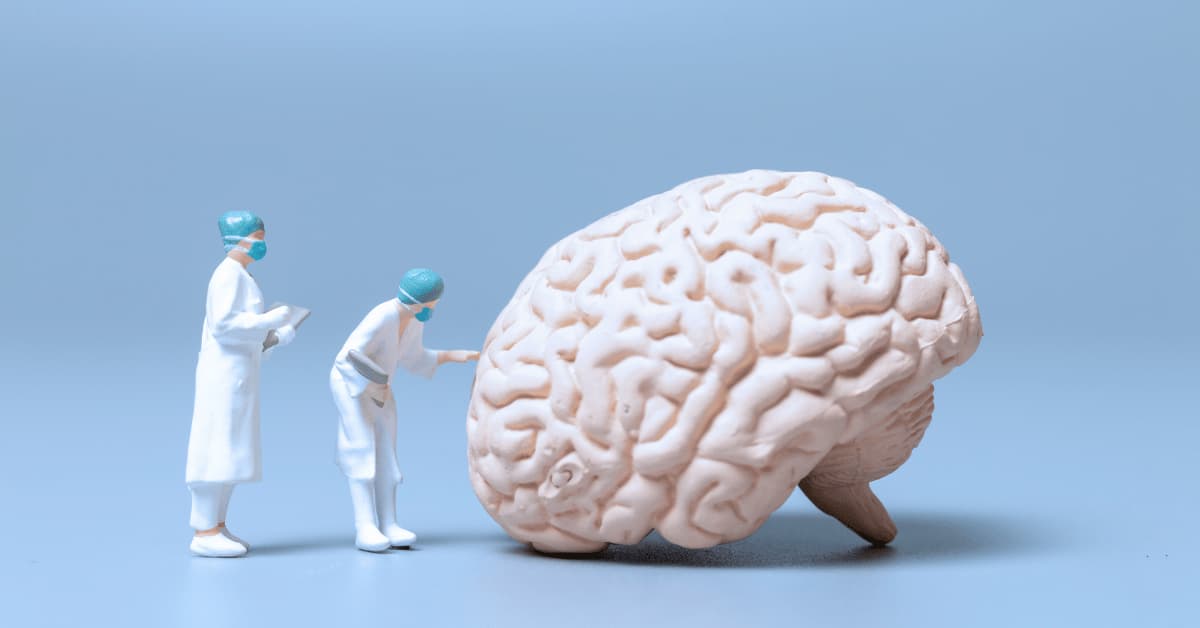
App Recommendation: Headspace
To immerse yourself in mindfulness and meditation practices, we recommend the Headspace app.
With its user-friendly interface and expert-guided meditations, Headspace offers a seamless platform for cultivating mindfulness and self-compassion, aiding those with social anxiety on their journey towards growth.
Research demonstrates significant improvements in irritability, affect, and stress caused by external pressures (Economides et al., 2018), as well as a reduction in anxiety and worry after using Headspace for four weeks (Abbott et al., 2023).
Moreover, a systematic review assessing the efficacy of mindfulness apps, including Headspace, with consideration for conflicts of interest, concluded that the results of trials investigating Headspace are promising (O’Daffer et al., 2022).
By clicking below, you can access a free 7-14 day trial of Headspace and experience how it can help incorporate mindfulness into your daily routine.
If you are a student, a special discount tailored to your needs is also available by clicking below (you still get the 7-14 day free trial to see if you like it).
Book Recommendation: The Mindful Self-Compassion Workbook
For those interested in cultivating mindful self-compassion as a tool to navigate social anxiety, we recommend “The Mindful Self-Compassion Workbook” by Kristin Neff and Christopher Germer (available for purchase here).
This science-based workbook offers practical steps to break free from self-judgments and cultivate emotional well-being, providing guided meditations, exercises, and stories to help transform your relationship with yourself and navigate the challenges of social anxiety.

Embracing Mindfulness and Compassion
In the therapeutic approaches we discussed in this section, the tools of mindfulness and compassion become allies, helping individuals transcend the constraints of social anxiety.
Availability of these pathways may vary depending on country and location, but for those who have access, these approaches hold the promise of a brighter, more connected, and authentic way of being in the world.
To learn more about compassion-based therapies for social anxiety, in particular CFT and SMC, you can click here to read our in-depth article.
Next up, let’s explore the power of collective support through group therapy as an effective means to address social anxiety.
Group Therapy
Efficacy Rating: Established Effectiveness
Availability Rating: Moderate Availability
Group therapy stands as a valuable approach for addressing social anxiety by harnessing the power of collective support and shared experiences.
It involves a collective setting where individuals with shared challenges come together under the guidance of a skilled therapist.

The Group Dynamic: Shared Experiences
Group therapy offers a distinct environment where individuals with social anxiety gather to explore their challenges, share their stories, and offer support to one another.
The shared experiences within the group foster a sense of belonging and camaraderie, often alleviating feelings of isolation.
Mutual Learning: Gaining Insights
In a group setting, participants learn from one another’s successes, setbacks, and coping strategies.
As individuals exchange their perspectives and insights, they often gain fresh perspectives on their own social anxiety and acquire new tools for managing it effectively.

Skill Enhancement: Real-Life Practice
Group therapy frequently incorporates skill-building exercises and role-playing, allowing participants to practice social skills and receive constructive feedback from peers.
This real-life practice can significantly boost confidence and competence in various social situations.
Challenges and Triumphs: Emotional Resonance
Sharing challenges and triumphs within a safe and supportive group environment elicits emotional resonance.
The group becomes a space where individuals can express their feelings openly and receive validation, encouragement, and empathy from others who truly understand.

Complementary to Individual Therapy: Tailoring the Approach
For some, group therapy serves as the primary mode of treatment for social anxiety.
Others may choose to combine group therapy with individual therapy, capitalizing on the benefits of both formats.
The decision depends on individual preferences and therapeutic goals.

Scientific Validation of Effectiveness for Social Anxiety
The effectiveness of group therapy for social anxiety is substantiated by robust research findings, highlighting its potential to alleviate anxiety symptoms and foster overall well-being.
- Studies suggest that cognitive-behavioral group therapy can significantly reduce social anxiety symptoms in female adolescents and even lower the risk of major depression for those with a history of depression (Hayward et al., 2000).
- A systematic review spanning multiple articles reveals that cognitive-behavioral group therapy yields positive outcomes in reducing social anxiety symptoms, alongside related concerns like depression and anxiety, in children and adolescents (Kaval & Sütcü, 2016).
- Incorporating data from 36 randomized-controlled trials, a meta-analysis asserts that group therapy for social anxiety stands on par with individual psychotherapy or pharmacotherapy in terms of efficacy (Barkowski et al., 2016).

Book Recommendation: The Schopenhauer Cure
“The Schopenhauer Cure” by Irvin Yalom is a captivating novel that provides a unique glimpse into the world of group therapy (available for purchase here).
While not a self-help book, this work delves into the intricacies of group dynamics, offering valuable insights into how therapy unfolds within a collective setting.
Highly recommended for those curious about the profound impact of group therapy and its transformative potential in a fictional context.
Strength in Numbers
Group therapy nurtures a sense of belonging and reduces feelings of isolation, which are common among those with social anxiety.
By confronting social challenges collectively, participants can build confidence, foster connections, and develop a sense of community.
This shared journey cultivates a deeper understanding of oneself and others, paving the way for lasting transformation on the path to overcoming social anxiety.
To learn more about group therapy for social anxiety, we recommend you click here to read our in-depth guide.

B. Promising Therapies With Less-Established Efficacy
Psychoanalysis
Efficacy Rating: Potential Effectiveness
Availability Rating: Widespread Availability
In the realm of therapeutic possibilities, psychoanalysis turns out to be a respectable endeavor that penetrates the deep recesses of the mind.
Unlike conventional therapies, many advocates refrain from labeling it as a “therapy” per se; rather, it is a process of self-exploration that penetrates the intricate structure of our inner world.
Just to avoid any confusion – strictly speaking, psychoanalysis forms part of psychodynamic therapy which we already discussed above.
In fact, psychoanalysis forms the foundation upon which all psychodynamic therapy is built.
However, in this section, we are referring to the more traditional psychoanalysis, as it is still practiced today.

Rooted in Freud’s Vision, Evolved by Modern Insights
Rooted in the pioneering work of Sigmund Freud, psychoanalysis is an introspective voyage designed to illuminate the subconscious elements influencing our thoughts, emotions, and behaviors.
While Freud’s foundational ideas remain, the field has evolved over time, integrating insights from a multitude of psychoanalysts, creating a rich and nuanced approach.
Uncovering the Complex Layers
Psychoanalysis offers a unique perspective for understanding social anxiety.
By diving deep into past experiences, early relationships, and the unconscious undercurrents that shape our lives, individuals can uncover the hidden origins of their social anxiety.
This intense exploration uncovers the complex layers that contribute to social anxiety and paves the way for transformative self-knowledge that often leads to profound changes in the present.

Duration and Frequency
Differing from the confines of more time-limited therapies, psychoanalysis distinguishes itself through its extended duration and frequency.
Sessions are frequently scheduled from typically one to three times a week, fostering the development of a profound therapeutic relationship. This gradual approach permits the exploration of the intricate facets of social anxiety.
Typically spanning several years, psychoanalysis allows ample time for profound insights to develop, although in certain instances, the duration might be relatively shorter.
Challenges in Research and Effectiveness
Assessing the effectiveness of psychoanalysis for social anxiety presents a unique challenge. Its deeply personalized nature, tailored to individual needs, makes standardized research challenging.
As such, empirical evidence of its efficacy for social anxiety is relatively limited compared to other therapeutic modalities. However, this does not mean that it is not effective, as is often wrongly inferred.
A study by McEvoy, O’Connor, & McCarthy in 2016 explored this complex realm. Using psychoanalytically informed interviews, they examined individuals with social anxiety disorder.

Four themes emerged from the participants’ experiences, vividly illustrating the intricate web of their struggles:
“A Critical Voice” exposes the enduring impact of negative parental interactions on self-worth, often stemming from unpredictable and critical fatherly relationships.
“A Passive Presence” reflects how early dynamics hindered participants from confidently engaging with the external world, a consequence of inadequate parental support.
“Failure to Launch” delves into the challenges of adolescent individuation, attributed to negative early experiences and contributing to enduring social anxiety.
“A Mask of Perfection” reveals how social anxiety prompts individuals to adopt a facade, driven by past experiences of conflicting parental messages and the need for external acceptance.
While these findings don’t definitively establish the effectiveness of psychoanalysis for treating social anxiety, they do emphasize its potential as an invaluable tool for delving into the underlying causes of social anxiety – which is a prerequisite to address them properly.

Exploring Further
For a deeper exploration of psychoanalysis for social anxiety, we invite you to read our in-depth article on this subject. You can access it by clicking here.
An Illuminating Journey of Self-Exploration
Shaped by Freud’s insights and enriched by modern perspectives, psychoanalysis provides an opportunity to illuminate the obscured paths leading to social anxiety, inviting individuals to engage in a profound and transformative exploration of the self.
As we continue our exploration of therapeutic approaches, we turn our attention to humanistic-existential therapy, a realm that places the individual’s self-actualization and personal growth at the heart of its philosophy.

Humanistic-Existential Therapy
Efficacy Rating: Potential Effectiveness
Availability Rating: Moderate Availability
Humanistic-existential therapy offers a profound approach to addressing social anxiety by emphasizing personal growth, authenticity, and the exploration of existential concerns.
This therapy delves into the depths of individual experience, fostering self-discovery and empowering individuals to confront anxiety.
Central to this therapy is the belief in the inherent worth of every individual, supported by therapists who offer unconditional positive regard.
This creates a nonjudgmental space for the exploration of thoughts, emotions, and anxieties.

Self-Exploration and Self-Actualization: A Journey Inward
This approach encourages self-exploration and self-actualization – the process of realizing one’s unique potential.
By delving into personal values, aspirations, and goals, individuals can strategically approach anxiety-inducing situations with increased clarity and confidence.
They learn to align their actions with their authentic selves, reducing the impact of anxiety-driven apprehensions and fostering a sense of genuine connection with others.
Existential Concerns: Confronting Life’s Meaning
Within the realm of humanistic-existential therapy, the addressing of existential concerns directly intersects with the journey to overcome social anxiety.
This approach adeptly tackles issues like the fear of rejection and the quest for life’s purpose, which often underlie social anxiety.

By delving into these profound themes, individuals embark on a process of introspection that unveils the roots of their struggle.
The exploration of these themes offers a profound insight into the motivations that drive social anxiety.
By dissecting these factors, individuals attain a clearer understanding of the underlying triggers, allowing them to confront and manage their anxieties more effectively.
Scientific Validity: A Philosophical Approach
Embedded within humanistic-existential therapy’s philosophical foundation is a reluctance to confine individuals within diagnostic labels or predefined categories.
This distinctive approach to understanding human experiences contributes to the scarcity of research in this domain.
However, the principles and techniques of humanistic-existential therapy, including therapeutic alliance, self-awareness, and existential exploration, have shown potential in treating anxiety disorders.
Carl Rogers, a prominent figure in this field, noted favorable outcomes when employing humanistic-existential therapy to address anxiety disorders (Rogers, 1957).
The focus on self-discovery and acceptance offers a promising avenue for navigating the complexities of social anxiety, providing individuals with tools to engage more meaningfully with social challenges and inner growth.

Embracing Growth and Authentic Living
Engaging in humanistic-existential therapy involves exploring deep-seated values, confronting existential concerns, and embracing personal authenticity.
If drawn to self-discovery and open to addressing social anxiety through growth, this approach may resonate.
To find out more about humanistic-existential therapy for social anxiety, we recommend you click here to read our complete guide.
Next, let’s delve into schema therapy, a comprehensive approach that delves into deeply ingrained patterns and beliefs, shedding light on how they contribute to social anxiety.

Schema Therapy
Efficacy Rating: Potential Effectiveness
Availability Rating: Moderate Availability
Schema therapy, a comprehensive and integrative approach, offers a lens to examine the deeply ingrained patterns and beliefs that shape our thoughts, emotions, and behaviors.
Developed by Dr. Jeffrey Young, schema therapy merges cognitive-behavioral techniques with elements of psychodynamic therapy, emotion-focused therapy, and attachment theory.

Roots of Schema Therapy
Central to schema therapy is the premise that within us lie early maladaptive schemas – ingrained patterns born from unfulfilled emotional needs during childhood.
These enduring schemas play a pivotal role in various psychological challenges, encompassing social anxiety among them.
Manifestations in Social Anxiety
In the realm of social anxiety, these schemas often manifest as self-critical thoughts, excessive fear of rejection, and negative self-perceptions.
Schema therapy seeks to identify these patterns, understand their origins, and challenge them through various techniques.

The Therapeutic Process
The therapeutic process typically involves identifying specific schemas related to social anxiety, exploring their underlying roots, and addressing associated coping strategies that may no longer serve a positive purpose.
During therapy, clients participate in experiential techniques like imagery and chair work.
In chair work, individuals vividly revisit and reframe their schemas. This process fosters emotional healing and brings about transformative change.
A Nuanced Approach
Schema therapy offers a nuanced approach, recognizing the interconnectedness of thoughts, emotions, and past experiences.
By addressing these underlying patterns, individuals can develop healthier coping mechanisms and a more authentic sense of self.

Scientific Validity: Promising for Social Anxiety
While schema therapy has been evolving over the years, growing in popularity, its application to social anxiety has been recognized as particularly promising due to its focus on the origins and maintenance of deeply ingrained beliefs.
- Research highlights schema therapy’s potential for social anxiety by pinpointing maladaptive schema modes like Vulnerable Child and Punitive Critic (Norton et al., 2023).
- Schema therapy shows promise in treating social anxiety as studies reveal improvements in disorder-specific symptoms and maladaptive schemas. This underlines its potential for addressing the intricacies of social anxiety (Peeters et al., 2022).
- The innovative combination of schema therapy with exposure and response prevention offers hope for non-responsive patients with chronic anxiety and comorbid personality disorder (Peeters, Stappenbelt, et al., 2021).
- Ongoing research comparing group cognitive behavioral therapy and group schema therapy for social anxiety highlights schema therapy’s role in addressing social anxiety in a group setting (Baljé et al., 2016).
- Research underscores the interplay between early maladaptive schemas and automatic thoughts in adolescents with social anxiety. Specific schemas play a pivotal role in the development and persistence of social anxiety, offering insights into how schema therapy could target these underlying mechanisms (Calvete et al., 2013).
As further research accumulates, it appears probable that schema therapy’s effectiveness for social anxiety will be more firmly established.

Availability Considerations
While the popularity of schema therapy is growing, and more therapists are being trained in its techniques, its widespread availability remains variable.
Depending on the country and location, access to trained therapists practicing schema therapy can vary significantly.
If the chance arises to explore schema therapy as a potential treatment avenue for your social anxiety, it could be a valuable consideration
If you’d like to learn more about schema therapy and how it can help with social anxiety, we invite you to click here to read our article that discusses this topic in more depth.
Next, we shift our focus to metacognitive therapy, an innovative approach that targets the thinking processes underlying social anxiety to foster lasting change.
Metacognitive Therapy
Efficacy Rating: Potential Effectiveness
Availability Rating: Limited Availability
Metacognitive therapy (MCT) is a unique approach focused on understanding and altering the thought processes that underlie anxiety. It differs from CBT, which primarily addresses the specific content of thoughts.
MCT shifts the spotlight to our “thinking about thinking“, empowering individuals to gain mastery over their cognitive patterns and emotional responses.

Targeting Cognitive Patterns
In MCT, the emphasis is on identifying and challenging maladaptive thought patterns and beliefs about the self and social situations.
Instead of directly addressing the content of thoughts, MCT targets metacognitive processes such as rumination, worry, and threat monitoring.
Through this approach, individuals learn to recognize their unhelpful thinking habits and develop strategies to manage them effectively.
Attention Training Technique
One of the core techniques in MCT is the “Attention Training Technique“, which helps individuals reduce the tendency to engage in excessive self-focused attention.
By learning to redirect attention away from self-focused thoughts, individuals can break the cycle of rumination and anxiety that often accompanies social situations.

Balancing Thoughts and Emotions
The overarching goal of metacognitive therapy is to create a more balanced and flexible relationship with one’s thoughts and emotions.
By fostering metacognitive awareness and understanding the cognitive processes underlying social anxiety, individuals can gain greater control over their responses, reduce excessive worry, and ultimately experience a reduction in social anxiety symptoms.

Scientific Validation of MCT for Social Anxiety
Preliminary research strongly suggests the potential efficacy of MCT in alleviating symptoms of social anxiety.
Early findings indicate that metacognitive interventions contribute to reduced anxiety, improved emotional regulation, and enhanced abilities in managing anxious thoughts. Positive indicators include:
- MCT exhibited positive results in reducing symptoms of social anxiety disorder across diverse subtypes, with substantial improvements sustained during treatment and up to a 6-month follow-up (Nordahl & Wells, 2018).
- Cognitive-behavioral and metacognitive approaches both impact social anxiety beliefs, with metacognitive beliefs influencing social anxiety through cognitive processes, underscoring their relevance for understanding and treating social anxiety (Gkika et al., 2018).
- Negative metacognitive beliefs, particularly those concerning uncontrollability and perceived thought danger, predict reduced social functioning in individuals at risk for mental health issues, emphasizing the importance of targeting these beliefs in psychological interventions (Bright et al., 2017).
- MCT holds promise for effectively reducing social avoidance, post-event processing, and self-consciousness in individuals diagnosed with social anxiety disorder (Lakshmi et al., 2016).

Availability Considerations
Unfortunately, the availability of specialized therapists in MCT remains limited.
While the approach holds promise for addressing social anxiety, finding therapists who are trained in and offer MCT may be a challenge in some areas.
Book Recommendation: Metacognitive Therapy – Free Yourself from Imprisoning Thoughts
For those seeking to break free from the grip of anxious and depressive thoughts, “Metacognitive Therapy: Free Yourself from Imprisoning Thoughts” offers an insightful approach (available for purchase here).
Through illustrative cases, this book introduces metacognitive therapy’s potential to reshape thought processes.
Authored by Linda Burlan Sørensen, a licensed clinical psychologist and metacognitive therapy expert, this book provides a pathway to regaining control over your mental landscape and fostering psychological well-being.

A Unique Perspective
While metacognitive therapy might not be as widely known as some other therapeutic approaches, its focus on metacognition and cognitive processes makes it a promising option for individuals seeking relief from social anxiety symptoms.

C. Alternative & Complementary Interventions
Narrative Therapy
Efficacy Rating: Unknown Effectiveness
Availability Rating: Limited Availability
Narrative therapy introduces a unique perspective in addressing social anxiety by transforming personal narratives and exploring fresh viewpoints.
By dissecting the stories individuals construct about social interactions, individuals can rewrite narratives that empower and liberate.

The Power of Stories: Shaping Identity and Experience
Narratives are potent tools that shape our identities and influence our reality.
Within the realm of social anxiety, individuals often craft narratives emphasizing fear, inadequacy, and unfavorable outcomes.
Narrative therapy seeks to reconstruct these stories, unveiling hidden strengths and unforeseen possibilities.
Externalizing Anxiety: Viewing Fear from Afar
Narrative therapy treats social anxiety as an external entity, distinct from one’s core identity.
This approach permits individuals to create a psychological distance between themselves and their anxiety, enabling collaborative efforts with therapists to challenge its grip.

Exploring New Perspectives: Seeds of Hope
An integral facet of narrative therapy is the exploration of alternative narratives – stories highlighting instances of resilience, strength, and achievement.
These narratives illuminate overlooked aspects, providing individuals with fresh angles on their journey with social anxiety.
Therapeutic Dialogues: Co-Creating Empowering Narratives
Narrative therapy unfolds through collaborative conversations between therapist and individual.
Guided dialogues empower individuals to co-author narratives that recognize their agency, dismantle limiting beliefs, and amplify positive dimensions of their experiences.

Scientific Landscape: Promising Horizons
While research on narrative therapy’s direct application to social anxiety is limited, its principles align with narrative-based approaches that have demonstrated effectiveness in various contexts.
By reshaping stories, individuals can trigger shifts in perception and behavior.
Here are key findings from two relevant studies:
- In the context of social anxiety disorder, individuals’ narratives of autobiographical social memories exhibit distinct features, such as a heightened self-referential focus, increased use of anxiety-related language, vivid descriptions of sensory experiences, and reduced references to others. This collectively underscores how social anxiety influences individuals’ perceptions, beliefs, and emotions during social situations (Anderson et al., 2008).
- The ability to narrate coherent autobiographical memories is inversely related to social anxiety levels. Mechanisms involving internal and external focus, working memory, rumination, and depressive symptoms play a role in this relationship, highlighting the potential significance of narrative coherence in understanding and addressing social anxiety (Vanaken & Hermans, 2020).

Considering Narrative Therapy
Please note that the above discussed findings do not confirm the effectiveness of narrative therapy for social anxiety, nor does the current lack of specific studies investigating it suggest its ineffectiveness.
Narrative therapy remains an alternative approach in the treatment of social anxiety, offering potential promise for individuals seeking unique avenues for addressing their challenges.
Cognitive Analytic Therapy
Efficacy Rating: Unclear Effectiveness
Availability Rating: Limited Availability
Rooted in both cognitive and psychoanalytic traditions, cognitive analytic therapy (CAT) provides a unique framework to delve into the intricate interplay between thought patterns and interpersonal dynamics.

Understanding the Mechanics
CAT delves into the cognitive and relational dimensions of an individual’s experiences, aiming to unveil patterns of thinking and behavior that contribute to social anxiety.
This therapy revolves around collaboration between therapist and client, working together to comprehend the origins of these patterns and develop strategies for change.
Shifting Patterns of Interaction
The process involves exploring early life experiences and relationships that might have influenced the development of self-beliefs and coping strategies.
By shining a light on these underlying factors, individuals gain insight into their triggers and reactions within social contexts, fostering empowerment to reshape their interactions.
Its integrated approach, addressing both cognitive patterns and interpersonal dynamics, aligns with the multifaceted nature of social anxiety’s origins and maintenance.

Promising Outlook Despite Limited Research
Through its exploration of cognitive patterns, interpersonal dynamics, and emotional responses, CAT emerges as a potential avenue for discovering new approaches to handling social anxiety.
With a track record of delivering lasting improvements across various psychological struggles – including interpersonal challenges and depression (Hallam et al., 2021) – CAT shows promise as a potential treatment for social anxiety.
Given its incorporation of cognitive therapy principles and utilization of strategies from psychodynamic therapy, it seems poised to hold significant potential in addressing social anxiety.

Navigating Availability and Promise
CAT’s limited availability might deter widespread access, but its promise as a tool for social anxiety warrants exploration for those seeking a comprehensive and personalized approach.
The current lack of extensive research in this area suggests a need for further investigation to establish CAT’s effectiveness definitively.
However, for individuals drawn to its blend of cognitive and interpersonal insights, CAT may hold the key to uncovering transformative change amidst social anxiety’s challenges.
Lastly, let’s redirect our focus to mind-body approaches, which should be viewed as complementary strategies rather than standalone therapies.

Mind-Body Approaches
Efficacy Rating: Limited Effectiveness
Availability Rating: Widespread Availability
Mind-body approaches, such as yoga and tai chi, offer a complementary path to addressing social anxiety by integrating physical movements with mindfulness and relaxation techniques.
These approaches emphasize the connection between mental and physical well-being, fostering a sense of inner harmony and balance.
Yoga
Yoga combines physical postures, controlled breathing, and meditation to enhance self-awareness and promote relaxation.
The deliberate movements and focused breathing patterns in yoga can help individuals manage stress and anxiety, leading to improved emotional regulation and an overall sense of calm.
Yoga can provide tools to cope with the physical and emotional sensations associated with social anxiety, making it a valuable complement to therapeutic interventions.

Studies indicate that yoga, with its meditative movement exercises, offers a promising avenue for anxiety reduction.
Among school children, yoga has demonstrated effectiveness in stress and anxiety management, suggesting its capacity to address social anxiety among youth (Nanthakumar, 2018).
Regular engagement in hatha yoga has shown the ability to significantly reduce stress, anxiety, and depression in women, thereby offering a complementary approach to tackling these mental health concerns (Shohani et al., 2018).
Tai Chi
Tai chi is a slow, flowing martial art that focuses on gentle movements, deep breathing, and mindfulness.
This practice cultivates mindfulness in motion, encouraging individuals to be present in the moment.
The slow and deliberate nature of tai chi can help reduce physical tension, anxiety symptoms, and rumination.
Similar to yoga, tai chi can be seen as a supplementary approach that equips individuals with relaxation techniques to manage the physiological and psychological aspects of social anxiety.

A pilot study highlighted the significant reduction of anxiety symptoms and promotion of relaxation through Tai Chi practice, potentially offering an effective avenue for those seeking anxiety relief (Hoffmann-Smith et al., 2009).
However, the effectiveness of Tai Chi is marked by varying study quality and mixed results, as suggested by a systematic review, indicating a need for further research to draw conclusive findings (Wang et al., 2009).
Adjunct to Therapy
While mind-body approaches offer relaxation and stress reduction benefits, it’s important to note that they are not standalone therapies for social anxiety.
They do not directly address the underlying causes or maintaining factors of social anxiety. Instead, yoga and tai chi can be seen as supportive tools that complement therapeutic interventions.

D. Therapy & Medication Synergy
For many individuals, the idea of incorporating medication alongside therapy might evoke feelings of uncertainty or concern.
This sentiment is entirely valid, as the decision to explore medication is a personal one and not a requisite for everyone undergoing therapy for social anxiety.
Yet, it’s essential to recognize that medication can offer significant benefits for some, acting as a complementary tool to bolster therapeutic outcomes.

Why Consider Adding Medication to Therapy
Social anxiety can manifest in both psychological and physiological ways, and in some cases, medication can help address the biological underpinnings of anxiety.
Here are a few reasons why adding medication to therapy can be helpful:
Targeting Physical Symptoms: Medication, particularly beta-blockers, can assist in managing physical symptoms of anxiety, such as trembling, sweating, and rapid heartbeat. This can be especially valuable for situations where these symptoms interfere with daily functioning.
Aiding in Initial Progress: For individuals with severe anxiety, the intensity of symptoms can sometimes hinder the progress made through therapy. Medication can provide initial relief, allowing individuals to engage more effectively in therapy and gradually learn coping skills.
Stabilizing Mood: Medications like SSRIs and SNRIs work to stabilize mood by increasing the availability of neurotransmitters such as serotonin and norepinephrine. This can contribute to a more balanced emotional state, facilitating therapeutic insights and growth.
Accelerating Progress: In some cases, combining medication with therapy can expedite progress. Medication can help reduce anxiety levels, allowing individuals to engage more deeply in the therapeutic process and practice new skills.

Scientific Support for a Combined Approach
Research suggests that combining therapy and medication can be an effective strategy for addressing social anxiety disorder:
- An updated pharmacotherapy algorithm recommends the combination of medication and psychotherapy for treating SAD (Stein et al., 2010).
- Certain substances may enhance psychotherapy efficacy when used in conjunction (Masdrakis et al., 2013).
- Combining CBT with medication can lead to better outcomes for social anxiety treatment (Behera et al., 2020).
- The synergy between psychotherapy and medication can improve symptom outcomes and skills acquisition (Bernik et al., 2018).
This combined approach maximizes the benefits of both interventions and can be discussed with your therapist and healthcare provider for personalized guidance.

Key Considerations
Here are several considerations to keep in mind when contemplating the addition of medication to your therapy.
Individualized Approach
The decision to incorporate medication into your therapeutic journey is highly individualized. Each person’s experience of social anxiety is unique, and what works for one may not work for another. A healthcare provider can assess your specific symptoms, history, and needs to determine if medication could be beneficial.
Managing Stigma
There can be societal stigma associated with taking medication for mental health concerns. It’s important to recognize that seeking help, whether through therapy, medication, or a combination, is a courageous step toward well-being. Ultimately, the goal is to find the approach that supports your overall mental health.
Short-Term and Long-Term Benefits
Medication can provide short-term relief by alleviating acute symptoms of anxiety, which can make it easier to engage in therapy and implement coping strategies. Over the long term, medication can contribute to changes in brain chemistry that promote a more stable emotional state.

Medication as a Tool
Viewing medication as a tool in your toolkit can be empowering. Just as therapy equips you with skills to navigate social anxiety, medication can provide physiological support. The combination of both approaches can enhance your ability to manage anxiety in various situations.
Medication Myths
Dispelling common myths about medication can be valuable. For example, not all medications lead to dependency or numb emotions. SSRIs and SNRIs, for instance, don’t create a euphoric high; instead, they gradually bring balance to neurotransmitter levels.
Collaborative Decision-Making
Engage in open and honest conversations with both your therapist and a healthcare provider when considering medication. Their insights, expertise, and collaborative approach can guide you toward a decision that aligns with your treatment goals.

Adjunctive Approach
Medication is meant to complement therapy, not replace it. The insights gained in therapy, such as understanding thought patterns, identifying triggers, and learning coping strategies, are vital components of managing social anxiety.
Regular Assessments
If you and your healthcare provider decide to explore medication, regular check-ins and assessments are crucial. Monitoring how you respond to the medication, managing potential side effects, and adjusting dosages if necessary are all part of the ongoing process.
Whether you choose to explore medication, rely solely on therapy, or adopt a combination approach, the most important aspect is finding what works best for you on your path to healing and growth.

Exploring Medication Options
For a more in-depth exploration of medication choices for social anxiety, our comprehensive guide offers an extensive understanding of each commonly utilized medication.
This includes insights into their benefits, potential side effects, associated risks, and the scientific evidence substantiating their effectiveness. You can access it by clicking here.
It’s important to remember that every individual’s journey is unique, and whether you choose to explore medication or not, your therapist and healthcare provider are valuable resources to help you make informed decisions that align with your goals and comfort.

E. Online vs In-Person Therapy Options
In recent years, the landscape of therapy has expanded to include both in-person and online options, offering individuals with social anxiety the flexibility to access treatment that suits their preferences and needs.
Each approach presents its unique benefits and considerations, allowing individuals to make informed choices based on their comfort and circumstances.
The Rise of Online Therapy
Online therapy has emerged as a viable and convenient option for many seeking treatment, particularly since the Covid-19 pandemic accelerated its availability.
The ease of accessing therapy from the comfort of your own space and the elimination of geographical barriers make online therapy an attractive choice.

Research suggests that online therapy can be equally effective for treating social anxiety as in-person therapy, especially for certain therapeutic approaches.
It can also be especially helpful for social anxiety, offering the flexibility to communicate via text messaging for those who may find video or phone calls intimidating, thereby lowering the entry threshold
Scientific Validation of Online Therapy for Social Anxiety
Scientific exploration into online therapy for social anxiety has garnered considerable attention, leading to the following noteworthy findings.
- Online cognitive therapy significantly reduced social anxiety symptoms compared to a waitlist group, with sustained positive effects (Thew et al., 2022).
- Guided internet-based CBT significantly reduced social anxiety, depression, and dysfunctional thinking. These improvements were maintained after six months (Tulbure et al., 2015).
- Both CBT and PDT delivered online showed improvements in social anxiety symptoms, regardless of patient preference. Therapeutic alliance played a role in outcomes (Lindegaard et al., 2020).
- Positive effects of internet-based CBT were maintained over a 5-year period, indicating lasting benefits (Hedman et al., 2011).

Advantages of In-Person Therapy
On the other hand, in-person therapy provides a face-to-face connection that some individuals find more reassuring and conducive to building a strong therapeutic alliance.
The personal interaction can lead to a deeper sense of connection with the therapist, which may be particularly beneficial for individuals with social anxiety.
In-person therapy also offers a dedicated space free from the distractions of home life, allowing for focused discussions and self-exploration.

Choosing the Right Fit for You
When deciding between in-person and online therapy, it’s important to factor in your personal preferences.
If you have access to a qualified therapist in your vicinity who specializes in the therapy you’re interested in, that’s a great option.
On the other hand, if this isn’t feasible or if the prospect of in-person sessions feels overwhelming, online therapy provides a legitimate alternative.

When considering online therapy, it’s important to ensure the platform prioritizes your privacy and security.
Verify the qualifications of the therapists and confirm that they have experience in treating social anxiety.
Read reviews and testimonials from others who have used the service to get a sense of its effectiveness.
Here are our top recommendations for online therapy providers. Each of these platforms possesses unique strengths, which we have highlighted.
Option 1: Best for CBT without Medication
If you’re seeking CBT for social anxiety without medication, we recommend “Online-Therapy“.
This platform offers a tailored experience, including 1 live session per week (video, voice, or text), unlimited messaging, an 8-section CBT program with 25 worksheets, daily worksheet replies, yoga, meditation videos, a journal, activity plan, and self-assessment tests.
You can even switch therapists easily for the right fit, all while ensuring a secure and confidential therapeutic environment.
When registering, make sure to choose ‘individual therapy‘ and then select ‘social anxiety‘. After that, you can provide further details about your particular situation.
Option 2: Best for CBT with Medication Option
For those seeking a comprehensive approach that combines CBT and medication for social anxiety, “Brightside” provides a well-rounded solution.
This service integrates evidence-based CBT with psychiatric services, ensuring you benefit from both therapeutic guidance and medical expertise.
With access to expert psychiatric providers and licensed therapists, you’ll have a personalized plan designed to address your unique needs and goals.
The provided link will directly take you to the section dedicated to social anxiety treatment. Begin by taking a free assessment to review your results, and then determine if you’d like to proceed with scheduling your initial appointment.
Option 3: Best for PDT, ACT & More, without Medication
If you’re seeking therapeutic approaches beyond CBT for managing your social anxiety, “BetterHelp” is a valuable platform to explore.
With a wide range of therapeutic modalities, including psychodynamic therapy and acceptance and commitment therapy, BetterHelp offers tailored support to address your unique needs.
Their pool of qualified therapists specializes in various evidence-based approaches, ensuring you have the flexibility to choose a method that resonates with you.
Upon clicking the link below, you’ll be prompted to answer a few questions about your present circumstances and your preferences for potential therapists. Additionally, you’ll have the opportunity to specify your desired type of therapy.
Option 4: Best for PDT, ACT & More, with Medication Option
For individuals seeking a comprehensive range of therapeutic approaches to address social anxiety, “Talkspace” offers a versatile platform that caters to various needs.
With an array of therapeutic specialties including psychodynamic therapy, ACT, humanistic-existential therapy and more, Talkspace provides a diverse selection of experienced therapists.
What sets Talkspace apart is its integrated psychiatry service, offering an avenue for those considering the addition of medication to their therapeutic journey.
Explore the workings of Talkspace through the link below. When you click on “I’m ready“, you’ll be presented with the option to select between therapy and psychiatry.
You can begin with either choice and add the other later if desired. Plus, our link provides access to a special coupon code.
Option 5: Best for Teens
If you’re a minor grappling with social anxiety, we strongly suggest discussing your concerns with your parents. After informing them, you can consider exploring TeenCounseling as a potential solution.
Their team of therapists specializes in working with teenagers and addressing issues commonly experienced during this phase, including social anxiety.
It’s important to note that at least one parent should be present to assist in the initial consultation.
If you are a parent of a child dealing with social anxiety, you have the option to schedule an appointment with a counselor at TeenCounseling, either with or without your child, to discuss how this service can potentially provide support and assistance.

F. Financial Considerations of Therapy
Understanding insurance coverage and managing therapy costs is a vital aspect of embarking on your therapeutic journey.
While the specifics can vary widely based on your country of residence, we’ll provide insights that cater to readers from around the world.

Navigating Insurance: An Overview
In many countries such as the United States, Canada, the United Kingdom, and Australia, therapy expenses are often covered by health insurance plans.
However, the extent of coverage and the types of therapies included can differ significantly.
Some insurance plans may cover only a portion of therapy costs, leaving you responsible for copayments or deductibles.
It’s advisable to inquire about your insurance plan’s mental health coverage, including the number of covered sessions and any restrictions on therapy types or providers.
Exploring options within your network can help you make the most of your coverage.

Beyond Traditional Coverage: Alternatives
For those without insurance coverage for therapy or for those seeking alternative paths, there are accessible options to consider.
Community mental health centers often provide low-cost or free therapy options based on income levels.
Sliding-scale fees offered by private therapists can make therapy more affordable based on your financial situation.
Additionally, online therapy platforms have gained popularity for their convenience and cost-effectiveness.

Paying Out-of-Pocket: Benefits and Considerations
Choosing to pay for therapy out-of-pocket can provide you with more control over your therapeutic experience.
You have the freedom to select a therapist who aligns with your preferences and needs, rather than being limited to providers covered by insurance networks.
Moreover, paying out-of-pocket can potentially reduce waiting times, allowing you to start therapy sooner.

However, it’s important to consider the financial commitment, as therapy costs can vary widely depending on factors such as location, therapist expertise, and session duration.
On average, therapy session costs can range from $70 to $200 or more per session. But, once again, this depends on your country of residence.
Given the diversity of financial situations, it’s important to note that the online therapy options we’ve suggested earlier start at just $40 per session, making them accessible and worth considering for many.
A Global Perspective of Financial Aspects
Recognizing the diversity of our readership, we understand that navigating the financial aspects of therapy can vary greatly depending on your location.
In some countries, insurance coverage for mental health services is more extensive and accessible, while in others, it is limited.
Whether you’re in a country with well-established coverage or seeking alternatives, your journey towards well-being is valid and achievable.

For those residing in countries where therapy might not be as widely accessible or covered by insurance, online therapy options like those we’ve recommended above can provide a practical and effective alternative.
Whether you opt for insurance-covered therapy, out-of-pocket payments, or explore online options, your commitment to your mental health is a powerful step towards a brighter future.
G. Additional Aspects & Key Considerations
Finding Your Therapeutic Fit
One of the most significant aspects of your therapeutic journey is finding a therapist who aligns with your needs and values.
While considering the therapeutic approach, specialization, and experience is crucial, the compatibility of the therapeutic relationship itself cannot be understated.
It’s absolutely okay to have initial consultations to see if a therapist is the right fit for you. Remember, it’s also okay to explore other therapists if you don’t feel completely comfortable.
Take time to gauge whether your therapist fosters a safe, nonjudgmental space where you feel understood and supported.
A strong therapeutic alliance contributes significantly to the effectiveness of the process.

Duration and Frequency of Therapy
Understanding the framework of therapy sessions is crucial as you embark on your journey.
The duration and frequency of therapy sessions can vary based on therapeutic modalities, your therapist’s recommendations, and your progress.
While sessions often last around 45-60 minutes, the frequency can range from weekly to bi-weekly, gradually tapering off as progress is made.
Consistency in attendance and engagement enhances the continuity of your progress.
Managing Expectations
Realism is a cornerstone of successful therapy. It’s important to acknowledge that progress may not always be linear.
Challenges and setbacks are an inherent part of the process, and they do not signify failure.
Therapy equips you with tools to navigate these hurdles, fostering resilience and self-awareness that contribute to long-term growth.
Embrace the journey, and recognize that both small and significant changes are meaningful steps forward.

Managing Setbacks and Plateaus
Navigating setbacks and plateaus is an inherent part of the therapeutic journey. These moments are not indicative of failure but rather opportunities for growth.
Your therapist will guide you in developing coping strategies to manage setbacks and reignite your momentum towards positive change.
By embracing the ups and downs, you build resilience and enhance your ability to navigate challenges in the future.
Addressing Co-Occurring Conditions
Social anxiety often coexists with other mental health conditions such as depression, generalized anxiety disorder, or panic disorder.
The beauty of therapy lies in its holistic approach, which often addresses multiple conditions simultaneously.
Your therapist’s expertise ensures that your treatment plan is tailored to target these intertwined challenges, offering comprehensive support for your overall well-being.

Therapy Homework and Skills Practice
Therapeutic progress extends beyond the confines of the session room. In many types of therapy, homework assignments and skills practice play a pivotal role in reinforcing the strategies learned.
Engaging in these tasks amplifies your learning, empowers you to apply techniques in real-life situations, and accelerates your progress towards managing social anxiety.
Consistent practice is a key factor in the effectiveness of therapy.
Boundaries and Confidentiality
A therapeutic relationship is built on trust, which is fortified by well-defined boundaries and confidentiality.
Your therapist ensures that your sessions are a safe space where you can openly discuss your thoughts and feelings without judgment.
Confidentiality is a cornerstone of therapy, assuring that your personal information remains secure and protected.
Understanding the limits and scope of confidentiality fosters a sense of security in the therapeutic process.

H. Starting Therapy: Tips & Recommendations
Choosing to embark on the path of seeking therapy is a testament to your inner strength and a commitment to self-care.
It’s crucial to recognize that seeking help is not a sign of weakness but a courageous stride towards enhancing your well-being.
In a world where the stigma around mental health is steadily diminishing, taking charge of your mental wellness reflects your resilience and determination to lead a more fulfilling life.

Tips for Your Therapeutic Journey
Approaching therapy with purpose and intention sets the foundation for a transformative experience. Here are essential steps to guide you as you commence your journey:
Self-Reflection
Dedicate time to pinpoint the specific challenges and goals you aim to address in therapy.
This self-awareness equips you to communicate effectively with your therapist, ensuring that your sessions are tailored to your needs.
Researching Therapists
Whether you’re considering in-person or online therapy, conduct thorough research to identify therapists in your area or within your preferred modality.
Seek professionals with a proven track record in treating social anxiety, and read reviews from previous clients to gauge their effectiveness.

Initial Consultations
Many therapists offer free initial consultations. Utilize this opportunity to evaluate the therapist’s approach, ask pertinent questions, and determine whether the therapeutic relationship aligns with your expectations.
Fostering Open Communication
Throughout your therapeutic journey, maintain an atmosphere of open communication with your therapist. Regularly share your progress, setbacks, and any concerns you may have.
This collaborative dialogue ensures that your therapy remains effective and in harmony with your evolving needs.

Cultivating Consistency and Patience
The progression you experience in therapy unfolds over time and requires dedication.
Be patient with yourself and the process, understanding that healing is a journey encompassing growth and self-discovery.
Each step forward, no matter how small, contributes to your overall transformation.
Embracing the Journey
As you take the bold step of seeking help, remember that you’re never alone. Countless individuals, just like you, have embarked on the path of overcoming social anxiety.
Embrace the guidance and support of your therapist, internalize the strategies you learn, and acknowledge the progress you make as you navigate this transformative journey towards a life filled with well-being, confidence, and authentic connection.

I. Conclusion
In closing, armed with a wealth of insight into the various therapeutic options for treating social anxiety, you can embark on a transformative journey toward emotional well-being and personal growth.
You’ve delved into established therapeutic approaches, promising interventions, and complementary techniques that can collectively illuminate a path to a brighter future.

Now, as you stand at the crossroads of possibility, consider taking the next pivotal step in your therapeutic voyage. Reflect on these guiding questions:
- Does your insurance cover therapy for social anxiety? If so, reaching out to your doctor to discuss your options and secure a therapy prescription might be your first stride.
- Whether insurance is in play or not, are you prepared to invest in your mental health? Determine your budget and how you’ll cover the cost of therapy, recognizing that your well-being is a priority worth pursuing.
- Which therapeutic approach resonates with you? Whether it’s cognitive-behavioral therapy, psychodynamic therapy, or another modality, clarify your preferences.
- Would you prefer therapy with or without medication? If the former, you might want to connect with a psychiatrist or a qualified healthcare provider to explore your options.
- In-person or online therapy? Contemplate which format aligns better with your lifestyle and comfort.
- What specific goals or aspects of your social anxiety would you like to address in therapy? Your first consultation can provide a platform to discuss these objectives.
As you navigate these questions and decisions, remember that the journey you’re embarking upon holds profound potential.

With this guide, we’ve aimed to cover all your questions about therapy for social anxiety. Most importantly, we’re hopeful that it has spurred you to take this essential stride.
Your journey starts now, and your future self will thank you for your commitment to well-being.
For additional steps that can complement your therapy, we invite you to delve into our article featuring 20 actionable tips and exercises designed to empower you in navigating social anxiety more effectively. You can access it by clicking here.
Lastly, we also encourage you to explore our comprehensive guide on social anxiety treatment. This guide covers not only therapy but also delves into medication, self-help techniques, lifestyle adjustments, and the importance of support networks. You can access the guide by clicking here.

J. FAQ
A: The duration of therapy varies based on therapy type, individual progress, and social anxiety severity. Sessions may be weekly or bi-weekly, spanning a few weeks to a year. Some continue occasional maintenance sessions for sustained progress.
A: Therapy sessions involve open conversations to discuss feelings, challenges, and goals. Depending on the approach, sessions may include role-playing, cognitive restructuring, mindfulness, or exposure activities.
A: Confidentiality is fundamental. Therapists maintain privacy per ethical guidelines, except when harm risk exists. Discuss confidentiality with your therapist initially.
A: Gauge progress by reflecting on thought, behavior, and emotion changes. Therapists use tools, self-reports, and discussions to adjust treatment plans.
A: Yes, therapy can address multiple conditions. Therapists consider interplay with depression, panic disorder, etc., in designing plans.
A: Find the right therapist by considering specialization, approach, experience, and fit. Trust instincts and schedule consultations for alignment.
A: Setbacks are natural. Communicate with your therapist to develop strategies and reignite progress collaboratively.
A: Yes, online therapy is effective for social anxiety. Research shows comparable outcomes. It’s accessible and convenient.
A: Reach out for consultations to discuss concerns and explore approaches. Consult mental health professionals for guidance.
A: Coverage varies by location, provider, and plan. Contact your insurance to understand mental health service coverage.
Yes, an integrated approach can provide a tailored plan addressing various aspects of social anxiety.
A: Therapists create a safe environment. Communicate discomfort. They’ll help explore topics at your pace.
A: Maximize benefits by active engagement, preparing questions, practicing skills, and experimenting with new approaches.
A: Yes, therapy can be effective regardless of severity. Therapists tailor plans for progress.
A: No, therapy is individualized. Therapists customize plans based on challenges, preferences, and goals.
A: Yes, therapy positively impacts various life areas. Coping skills lead to improvements in relationships, work, and well-being.
A: Yes, therapy addresses anticipatory anxiety. Coping strategies manage feelings and improve social navigation.
Motivation is essential for success. Active engagement and commitment lead to meaningful progress.
Yes, therapy enhances social skills and confidence. Techniques like role-playing and exposure exercises aid social interaction.
A: Yes, therapy is tailored for adolescents. Techniques suit developmental stages and unique needs.
Reduced anxiety, improved interactions, and emotional regulation indicate progress. Discuss changes regularly with your therapist.
A: Involving loved ones is beneficial, especially for therapies focusing on relationships. It provides additional support and understanding.
A: Collaborative process relies on fit and approach. Discuss past experiences for a better match.
A: Yes, resources like books, online content, and support groups complement therapy. Therapists can recommend fitting resources.
Abbott, D., Lack, C. W., & Anderson, P. (2023). Does Using a Mindfulness App Reduce Anxiety and Worry? A Randomized-Controlled Trial. Journal of cognitive psychotherapy, 37(1), 26–42. https://doi.org/10.1891/JCPSY-D-20-00058
Anderson, P. L., Edwards, S. M., & Goodnight, J. R. (2017). Virtual Reality and Exposure Group Therapy for Social Anxiety Disorder: Results from a 4–6 Year Follow-Up. Cognitive Therapy and Research, 41(2), 230–236. https://doi.org/10.1007/s10608-016-9820-y
Anderson, B., Goldin, P. R., Kurita, K., & Gross, J. J. (2008). Self-representation in social anxiety disorder: linguistic analysis of autobiographical narratives. Behaviour research and therapy, 46(10), 1119–1125. https://doi.org/10.1016/j.brat.2008.07.001
Baljé, A., Greeven, A., van Giezen, A., Korrelboom, K., Arntz, A., & Spinhoven, P. (2016). Group schema therapy versus group cognitive behavioral therapy for social anxiety disorder with comorbid avoidant personality disorder: study protocol for a randomized controlled trial. Trials, 17(1), 487. https://doi.org/10.1186/s13063-016-1605-9
Barkowski, S., Schwartze, D., Strauss, B., Burlingame, G. M., Barth, J., & Rosendahl, J. (2016). Efficacy of group psychotherapy for social anxiety disorder: A meta-analysis of randomized-controlled trials. Journal of anxiety disorders, 39, 44–64. https://doi.org/10.1016/j.janxdis.2016.02.005
Behera, N., Samantaray, N. N., Kar, N., Nayak, M. R., & Chaudhury, S. (2020). Effectiveness of cognitive behavioral therapy on social anxiety disorder: A comparative study. Industrial psychiatry journal, 29(1), 76–81. https://doi.org/10.4103/ipj.ipj_2_20
Bernik, M., Corregiari, F., Savoia, M. G., Barros Neto, T. P., Pinheiro, C., & Neto, F. L. (2018). Concomitant treatment with sertraline and social skills training improves social skills acquisition in social anxiety disorder: A double-blind, randomized controlled trial. PloS one, 13(10), e0205809. https://doi.org/10.1371/journal.pone.0205809
Boersma, K., Håkanson, A., Salomonsson, E., & Johansson, I. (2014). Compassion Focused Therapy to Counteract Shame, Self-Criticism and Isolation. A Replicated Single Case Experimental Study for Individuals With Social Anxiety. Journal of Contemporary Psychotherapy, 45(2), 89–98. doi:10.1007/s10879-014-9286-8
Borge, F. M., Hoffart, A., Sexton, H., Clark, D. M., Markowitz, J. C., & McManus, F. (2008). Residential cognitive therapy versus residential interpersonal therapy for social phobia: a randomized clinical trial. Journal of anxiety disorders, 22(6), 991–1010. https://doi.org/10.1016/j.janxdis.2007.10.002
Bright, M., Parker, S., French, P., Fowler, D., Gumley, A., Morrison, A. P., Birchwood, M., Jones, P. B., Stewart, S. L. K., & Wells, A. (2018). Metacognitive beliefs as psychological predictors of social functioning: An investigation with young people at risk of psychosis. Psychiatry research, 262, 520–526. https://doi.org/10.1016/j.psychres.2017.09.037
Butler, A. C., Chapman, J. E., Forman, E. M., & Beck, A. T. (2006). The empirical status of cognitive-behavioral therapy: a review of meta-analyses. Clinical psychology review, 26(1), 17–31. https://doi.org/10.1016/j.cpr.2005.07.003
Calvete, E., Orue, I., & Hankin, B. L. (2013). Early maladaptive schemas and social anxiety in adolescents: the mediating role of anxious automatic thoughts. Journal of anxiety disorders, 27(3), 278–288. https://doi.org/10.1016/j.janxdis.2013.02.011
Chesham, R. K., Malouff, J. M., & Schutte, N. S. (2018). Meta-analysis of the efficacy of virtual reality exposure therapy for social anxiety. Behaviour Change, 35(3), 152–166. https://doi.org/10.1017/bec.2018.15
Ebrahiminejad, S., Poursharifi, H., Bakhshiour Roodsari, A., Zeinodini, Z., & Noorbakhsh, S. (2016). The Effectiveness of Mindfulness-Based Cognitive Therapy on Iranian Female Adolescents Suffering From Social Anxiety. Iranian Red Crescent medical journal, 18(11), e25116. https://doi.org/10.5812/ircmj.25116
Economides, M., Martman, J., Bell, M. J., & Sanderson, B. (2018). Improvements in Stress, Affect, and Irritability Following Brief Use of a Mindfulness-based Smartphone App: A Randomized Controlled Trial. Mindfulness, 9(5), 1584–1593. https://doi.org/10.1007/s12671-018-0905-4
Foa, E. B., & Kozak, M. J. (1986). Emotional processing of fear: Exposure to corrective information. Psychological Bulletin, 99(1), 20–35. https://doi.org/10.1037/0033-2909.99.1.20
Geraets, C. N. W., Veling, W., Witlox, M., Staring, A. B. P., Matthijssen, S. J. M. A., & Cath, D. (2019). Virtual reality-based cognitive behavioural therapy for patients with generalized social anxiety disorder: a pilot study. Behavioural and cognitive psychotherapy, 47(6), 745–750. https://doi.org/10.1017/S1352465819000225
Gill, C., Watson, L., Williams, C., & Chan, S. W. Y. (2018). Social anxiety and self-compassion in adolescents. Journal of adolescence, 69, 163–174. https://doi.org/10.1016/j.adolescence.2018.10.004
Gkika, S., Wittkowski, A., & Wells, A. (2018). Social cognition and metacognition in social anxiety: A systematic review. Clinical psychology & psychotherapy, 25(1), 10–30. https://doi.org/10.1002/cpp.2127
Goldin, P. R., & Gross, J. J. (2010). Effects of mindfulness-based stress reduction (MBSR) on emotion regulation in social anxiety disorder. Emotion (Washington, D.C.), 10(1), 83–91. https://doi.org/10.1037/a0018441
Grant, B. F., Hasin, D. S., Blanco, C., Stinson, F. S., Chou, S. P., Goldstein, R. B., Dawson, D. A., Smith, S., Saha, T. D., & Huang, B. (2005). The epidemiology of social anxiety disorder in the United States: results from the National Epidemiologic Survey on Alcohol and Related Conditions. The Journal of clinical psychiatry, 66(11), 1351–1361. https://doi.org/10.4088/jcp.v66n1102
Hallam, C., Simmonds-Buckley, M., Kellett, S., Greenhill, B., & Jones, A. (2021). The acceptability, effectiveness, and durability of cognitive analytic therapy: Systematic review and meta-analysis. Psychology and psychotherapy, 94 Suppl 1, 8–35. https://doi.org/10.1111/papt.12286
Hambour, V. K., Zimmer-Gembeck, M. J., Clear, S., Rowe, S., & Avdagic, E. (2018). Emotion regulation and mindfulness in adolescents: Conceptual and empirical connection and associations with social anxiety symptoms. Personality and Individual Differences, 134, 7–12. doi:10.1016/j.paid.2018.05.037
Hayward, C., Varady, S., Albano, A. M., Thienemann, M., Henderson, L., & Schatzberg, A. F. (2000). Cognitive-behavioral group therapy for social phobia in female adolescents: results of a pilot study. Journal of the American Academy of Child and Adolescent Psychiatry, 39(6), 721–726. https://doi.org/10.1097/00004583-200006000-00010
Hedman, E., Furmark, T., Carlbring, P., Ljótsson, B., Rück, C., Lindefors, N., & Andersson, G. (2011). A 5-Year follow-up of internet-based cognitive behavior therapy for social anxiety disorder. Journal of medical Internet research, 13(2), e39. https://doi.org/10.2196/jmir.1776
Hoffart, A., Borge, F. M., Sexton, H., & Clark, D. M. (2009). Change processes in residential cognitive and interpersonal psychotherapy for social phobia: a process-outcome study. Behavior therapy, 40(1), 10–22. https://doi.org/10.1016/j.beth.2007.12.003
Hoffmann-Smith, K., Ma, A., Yeh, C., DeGuire, N. & Smith, J. (2009). The Effect of Tai Chi in Reducing Anxiety in an Ambulatory Population. Journal of Complementary and Integrative Medicine, 6(1). https://doi.org/10.2202/1553-3840.1187
Hui, H. (2011). Effects of group interpersonal psychotherapy and group cognitive behavioral therapy on social anxiety in college students. Chinese mental health journal.
Ivanova, E., Lindner, P., Ly, K. H., Dahlin, M., Vernmark, K., Andersson, G., & Carlbring, P. (2016). Guided and unguided Acceptance and Commitment Therapy for social anxiety disorder and/or panic disorder provided via the Internet and a smartphone application: A randomized controlled trial. Journal of anxiety disorders, 44, 27–35. https://doi.org/10.1016/j.janxdis.2016.09.012
Jefferies, P., & Ungar, M. (2020). Social anxiety in young people: A prevalence study in seven countries. PloS one, 15(9), e0239133. https://doi.org/10.1371/journal.pone.0239133
Johansson, R., Hesslow, T., Ljótsson, B., Jansson, A., Jonsson, L., Färdig, S., Karlsson, J., Hesser, H., Frederick, R. J., Lilliengren, P., Carlbring, P., & Andersson, G. (2017). Internet-based affect-focused psychodynamic therapy for social anxiety disorder: A randomized controlled trial with 2-year follow-up. Psychotherapy (Chicago, Ill.), 54(4), 351–360. https://doi.org/10.1037/pst0000147
Kaczkurkin, A. N., & Foa, E. B. (2015). Cognitive-behavioral therapy for anxiety disorders: an update on the empirical evidence. Dialogues in clinical neuroscience, 17(3), 337–346. https://doi.org/10.31887/DCNS.2015.17.3/akaczkurkin
Kaval, N., & Sütcü, S. (2016). Effectiveness of Cognitive Behavioral Group Therapy for Social Anxiety Disorder in Children and Adolescents: A Systematic Review. Psikiyatride Güncel Yaklaşımlar – Current Approaches in Psychiatry, 8(Ek 1), 3-22.
Kessler, R. C., Berglund, P., Demler, O., Jin, R., Merikangas, K. R., & Walters, E. E. (2005). Lifetime prevalence and age-of-onset distributions of DSM-IV disorders in the National Comorbidity Survey Replication. Archives of general psychiatry, 62(6), 593–602. https://doi.org/10.1001/archpsyc.62.6.593
Khoramnia, S., Bavafa, A., Jaberghaderi, N., Parvizifard, A., Foroughi, A., Ahmadi, M., & Amiri, S. (2020). The effectiveness of acceptance and commitment therapy for social anxiety disorder: A randomized clinical trial. Trends in Psychiatry and Psychotherapy, 42(1), 30–38. https://doi.org/10.1590/2237-6089-2019-0003
Klinger, E., Bouchard, S., Légeron, P., Roy, S., Lauer, F., Chemin, I., & Nugues, P. (2005). Virtual reality therapy versus cognitive behavior therapy for social phobia: a preliminary controlled study. Cyberpsychology & behavior : the impact of the Internet, multimedia and virtual reality on behavior and society, 8(1), 76–88. https://doi.org/10.1089/cpb.2005.8.76
Kocovski, N. L., Fleming, J. E., Blackie, R. A., MacKenzie, M. B., & Rose, A. L. (2018). Self-Help for Social Anxiety: Randomized Controlled Trial comparing a Mindfulness and Acceptance-based Approach with a Control Group. Behavior Therapy. doi:10.1016/j.beth.2018.10.007
Lakshmi, J., Sudhir, P. M., Sharma, M. P., & Math, S. B. (2016). Effectiveness of Metacognitive Therapy in Patients with Social Anxiety Disorder: A Pilot Investigation. Indian journal of psychological medicine, 38(5), 466–471. https://doi.org/10.4103/0253-7176.191385
Landy, L. N., Schneider, R. L., & Arch, J. J. (2015). Acceptance and commitment therapy for the treatment of anxiety disorders: a concise review. Current Opinion in Psychology, 2, 70–74. doi:10.1016/j.copsyc.2014.11.004
Leichsenring, F., Salzer, S., Beutel, M. E., Herpertz, S., Hiller, W., Hoyer, J., Huesing, J., Joraschky, P., Nolting, B., Poehlmann, K., Ritter, V., Stangier, U., Strauss, B., Stuhldreher, N., Tefikow, S., Teismann, T., Willutzki, U., Wiltink, J., & Leibing, E. (2013). Psychodynamic therapy and cognitive-behavioral therapy in social anxiety disorder: a multicenter randomized controlled trial. The American journal of psychiatry, 170(7), 759–767. https://doi.org/10.1176/appi.ajp.2013.12081125
Leichsenring, F., Salzer, S., Beutel, M. E., Herpertz, S., Hiller, W., Hoyer, J., Huesing, J., Joraschky, P., Nolting, B., Poehlmann, K., Ritter, V., Stangier, U., Strauss, B., Tefikow, S., Teismann, T., Willutzki, U., Wiltink, J., & Leibing, E. (2014). Long-term outcome of psychodynamic therapy and cognitive-behavioral therapy in social anxiety disorder. The American journal of psychiatry, 171(10), 1074–1082. https://doi.org/10.1176/appi.ajp.2014.13111514
Lindegaard, T., Hesslow, T., Nilsson, M., Johansson, R., Carlbring, P., Lilliengren, P., & Andersson, G. (2020). Internet-based psychodynamic therapy vs cognitive behavioural therapy for social anxiety disorder: A preference study. Internet interventions, 20, 100316. https://doi.org/10.1016/j.invent.2020.100316
Lipsitz, J. D., Gur, M., Vermes, D., Petkova, E., Cheng, J., Miller, N., Laino, J., Liebowitz, M. R., & Fyer, A. J. (2008). A randomized trial of interpersonal therapy versus supportive therapy for social anxiety disorder. Depression and anxiety, 25(6), 542–553. https://doi.org/10.1002/da.20364
Liu, X., Yi, P., Ma, L., Liu, W., Deng, W., Yang, X., Liang, M., Luo, J., Li, N., & Li, X. (2021). Mindfulness-based interventions for social anxiety disorder: A systematic review and meta-analysis. Psychiatry research, 300, 113935. https://doi.org/10.1016/j.psychres.2021.113935
Masdrakis, V. G., Turic, D., & Baldwin, D. S. (2013). Pharmacological treatment of social anxiety disorder. Modern trends in pharmacopsychiatry, 29, 144–153. https://doi.org/10.1159/000351960
Masia Warner, C., Fisher, P. H., Shrout, P. E., Rathor, S., & Klein, R. G. (2007). Treating adolescents with social anxiety disorder in school: an attention control trial. Journal of child psychology and psychiatry, and allied disciplines, 48(7), 676–686. https://doi.org/10.1111/j.1469-7610.2007.01737.x
Mayo-Wilson, E., Dias, S., Mavranezouli, I., Kew, K., Clark, D. M., Ades, A. E., & Pilling, S. (2014). Psychological and pharmacological interventions for social anxiety disorder in adults: a systematic review and network meta-analysis. The lancet. Psychiatry, 1(5), 368–376. https://doi.org/10.1016/S2215-0366(14)70329-3
McBride, N. L., Bates, G. W., Elphinstone, B., & Whitehead, R. (2022). Self-compassion and social anxiety: The mediating effect of emotion regulation strategies and the influence of depressed mood. Psychology and psychotherapy, 95(4), 1036–1055. https://doi.org/10.1111/papt.12417
McEvoy, B., O’Connor, J., & McCarthy, O. (2016). Behind the Mask: A Psychodynamic Exploration of the Experiences of Individuals Diagnosed with Social Anxiety Disorder. Psychodynamic psychiatry, 44(4), 541–565. https://doi.org/10.1521/pdps.2016.44.4.541
Molavi, P., Mikaeili, N., Rahimi, N., & Mehri, S. (2014). The Effectiveness of Acceptance and Commitment Therapy Based on Reducing Anxiety and Depression in Students with Social Phobia. Journal of Ardabil University of Medical Sciences, 14, 412-423.
Nanthakumar C. (2018). The benefits of yoga in children. Journal of integrative medicine, 16(1), 14–19. https://doi.org/10.1016/j.joim.2017.12.008
Noda S, Shirotsuki K and Sasagawa S (2022) Self-focused attention, cost/probability bias, and avoidance behavior mediate the relationship between trait mindfulness and social anxiety: A cross-sectional study. Front. Psychol. 13:942801. doi: 10.3389/fpsyg.2022.942801
Nordahl H and Wells A (2018) Metacognitive Therapy for Social Anxiety Disorder: An A–B Replication Series Across Social Anxiety Subtypes. Front. Psychol. 9:540. doi: 10.3389/fpsyg.2018.00540
Norton, A. R., Penney, E., & Abbott, M. J. (2023). An exploratory investigation of schema modes in social anxiety disorder: Empirical findings and case conceptualization. Journal of clinical psychology, 79(4), 1021–1038. https://doi.org/10.1002/jclp.23457
Norton, P. J., & Price, E. C. (2007). A meta-analytic review of adult cognitive-behavioral treatment outcome across the anxiety disorders. The Journal of nervous and mental disease, 195(6), 521–531. https://doi.org/10.1097/01.nmd.0000253843.70149.9a
O’Daffer, A., Colt, S. F., Wasil, A. R., & Lau, N. (2022). Efficacy and Conflicts of Interest in Randomized Controlled Trials Evaluating Headspace and Calm Apps: Systematic Review. JMIR mental health, 9(9), e40924. https://doi.org/10.2196/40924
Olivares-Olivares, P. J., Ortiz-González, P. F., & Olivares, J. (2019). Role of social skills training in adolescents with social anxiety disorder. International journal of clinical and health psychology : IJCHP, 19(1), 41–48. https://doi.org/10.1016/j.ijchp.2018.11.002
Peeters, N., Stappenbelt, S., Burk, W. J., van Passel, B., & Krans, J. (2021). Schema therapy with exposure and response prevention for the treatment of chronic anxiety with comorbid personality disorder. The British journal of clinical psychology, 60(1), 68–76. https://doi.org/10.1111/bjc.12271
Peeters, N., van Passel, B., & Krans, J. (2022). The effectiveness of schema therapy for patients with anxiety disorders, OCD, or PTSD: A systematic review and research agenda. The British journal of clinical psychology, 61(3), 579–597. https://doi.org/10.1111/bjc.12324
Rogers, C. R. (1957). The necessary and sufficient conditions of therapeutic personality change. Journal of Consulting Psychology, 21(2), 95–103. https://doi.org/10.1037/h0045357
Salzer, S., Stefini, A., Kronmüller, K. T., Leibing, E., Leichsenring, F., Henningsen, P., Peseschkian, H., Reich, G., Rosner, R., Ruhl, U., Schopf, Y., Steinert, C., Vonderlin, E., & Steil, R. (2018). Cognitive-Behavioral and Psychodynamic Therapy in Adolescents with Social Anxiety Disorder: A Multicenter Randomized Controlled Trial. Psychotherapy and psychosomatics, 87(4), 223–233. https://doi.org/10.1159/000488990
Scaini, S., Belotti, R., Ogliari, A., & Battaglia, M. (2016). A comprehensive meta-analysis of cognitive-behavioral interventions for social anxiety disorder in children and adolescents. Journal of anxiety disorders, 42, 105–112. https://doi.org/10.1016/j.janxdis.2016.05.008
Segrin, C. (1996). The Relationship Between Social Skills Deficits and Psychosocial Problems: A Test of a Vulnerability Model. Communication Research, 23(4), 425–450. https://doi.org/10.1177/009365096023004005
Shohani, M., Badfar, G., Nasirkandy, M. P., Kaikhavani, S., Rahmati, S., Modmeli, Y., Soleymani, A., & Azami, M. (2018). The Effect of Yoga on Stress, Anxiety, and Depression in Women. International journal of preventive medicine, 9, 21. https://doi.org/10.4103/ijpvm.IJPVM_242_16
Stangier, U., Schramm, E., Heidenreich, T., Berger, M., & Clark, D. M. (2011). Cognitive therapy vs interpersonal psychotherapy in social anxiety disorder: a randomized controlled trial. Archives of general psychiatry, 68(7), 692–700. https://doi.org/10.1001/archgenpsychiatry.2011.67
Stein, D. J., Baldwin, D. S., Bandelow, B., Blanco, C., Fontenelle, L. F., Lee, S., Matsunaga, H., Osser, D., Stein, M. B., & van Ameringen, M. (2010). A 2010 evidence-based algorithm for the pharmacotherapy of social anxiety disorder. Current psychiatry reports, 12(5), 471–477. https://doi.org/10.1007/s11920-010-0140-8
Thew, G. R., Kwok, A. P. L., Lissillour Chan, M. H., Powell, C. L. Y. M., Wild, J., Leung, P. W. L., & Clark, D. M. (2022). Internet-delivered cognitive therapy for social anxiety disorder in Hong Kong: A randomized controlled trial. Internet interventions, 28, 100539. https://doi.org/10.1016/j.invent.2022.100539
Tulbure, B. T., Szentagotai, A., David, O., Ștefan, S., Månsson, K. N., David, D., & Andersson, G. (2015). Internet-delivered cognitive-behavioral therapy for social anxiety disorder in Romania: a randomized controlled trial. PloS one, 10(5), e0123997. https://doi.org/10.1371/journal.pone.0123997
Vanaken, L., & Hermans, D. (2020). How am I going to tell you this? The relations between social anxiety and narrative coherence. Memory (Hove, England), 28(10), 1191–1203. https://doi.org/10.1080/09658211.2020.1826971
Wang, W. C., Zhang, A. L., Rasmussen, B., Lin, L. W., Dunning, T., Kang, S. W., Park, B. J., & Lo, S. K. (2009). The effect of Tai Chi on psychosocial well-being: a systematic review of randomized controlled trials. Journal of acupuncture and meridian studies, 2(3), 171–181. https://doi.org/10.1016/S2005-2901(09)60052-2
Willutzki, U., Teismann, T., & Schulte, D. (2012). Psychotherapy for social anxiety disorder: long-term effectiveness of resource-oriented cognitive-behavioral therapy and cognitive therapy in social anxiety disorder. Journal of clinical psychology, 68(6), 581–591. https://doi.org/10.1002/jclp.21842
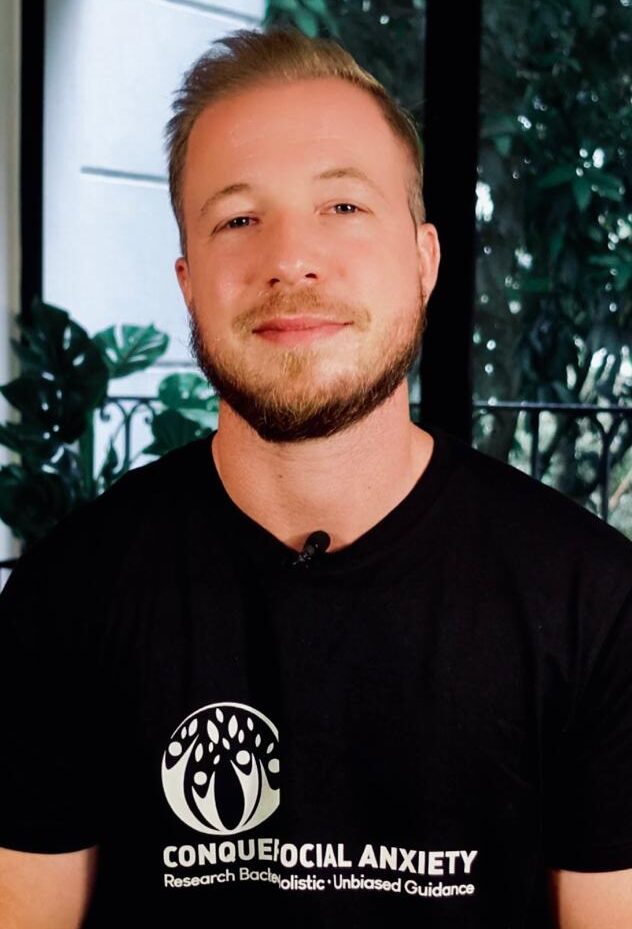
About the Author: Martin Stork
Martin is a professional psychologist with a background in physical therapy. He has organized and led various support groups for people with social anxiety in Washington, DC and Buenos Aires, Argentina. He is the founder of Conquer Social Anxiety Ltd, where he operates as a writer, therapist and director. You can click here to find out more about Martin.


